
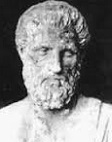
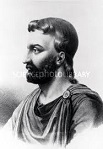








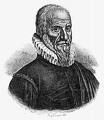


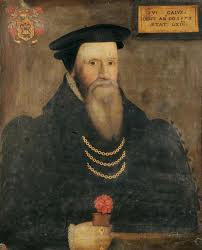





















TLW's Doctor-Nursescope™ (Doctor-Nurse Historyscope) |
By T.L. Winslow (TLW), the Historyscoper™ |
© Copyright by T.L. Winslow. All Rights Reserved. |
Original Pub. Date: Feb. 12, 2016. Last Update: Jan. 7, 2025. |
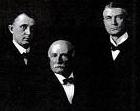
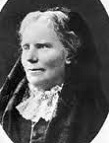
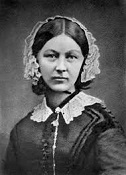










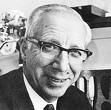
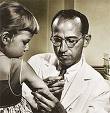
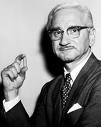

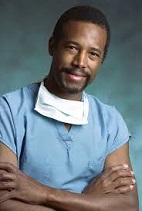
Westerners are not only known as history ignoramuses, but double dumbass history ignoramuses when it comes to doctor (physician) (Lat. "medicus" = doctor) (Lat. "docere" = to teach) (Gr. "physikos" = natural), surgeon (Gr. "cheir" + "ergon" = hand + work), and don't-say-wet nurse (Lat. "nutrire" = to suckle) history. Since I'm the one-and-only Historyscoper (tm), let me quickly bring you up to speed before you dive into my Master Historyscope.
The History of Medicine as a scientific discipline starts in the West, home of the best; medical science evolved from religion and spirituality, esp. sacred rituals; the scientific basis of medicine began in Ancient Greece. In Europe the discipline of Surgery was relegated to barbers and other butchers, er, amateurs until the 18th cent. C.E. Age of Enlightenment.
Prehistoric medicine included herbal and clay cures by medicine men and shamans.
About 7000 B.C.E. Neolithic dentists in Baluchistan, Pakistan begin using flint and bowstring drills sans anesthesia to drill molars; the technique is forgotten by -5500? - Robert Macchiarelli of the U. of Poitiers, 2006.
About 5,000 B.C.E. the first known trepanation operations are carried out in Ensisheim, Alsace, France.
About 4,900 B.C.E. the first known surgery is an amputation operation on the left forearm of an elderly man in Buthiers-Boulancourt (40 mi. S of modern-day Paris), France, complete with anesthesia and aseptic conditions.
Third time's the charm, as Pyramids take a great step forward without bulldjosers?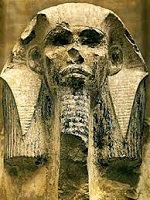

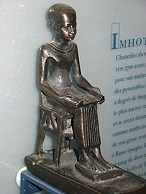
In 2,630 B.C.E. Zanakht dies, and his younger brother Djoser (Zoser) (Netjerykhet = "divine of body") (d. -2610) becomes king #2 of Egypt's Third Dynasty, ruling for 29 years, building the Step Pyramid in Saqqara 12 mi. S of modern-day Cairo, becoming the first pyramid in Egypt, launching the Age of the Pyramids (3rd thru 6th Dynasties, AKA the Old Kingdom) (ends -2200); Djoser's painted limestone statue in Saqqara becomes the oldest life-sized Egyptian statue to survive to modern times; chancellor Imhotep ("one who comes in peace"), architect of the Step Pyramid and high priest of Ra in Heliopolis thrives during the Third Dynasty at the court of King Djoser, later becoming the center of a cult in Memphis in the 30th Dynasty (380-343 B.C.E.), worshiped as the "god of medicine" and "prince of peace", becoming the only Egyptian commoner to be deified after his death other than Amenhotep, son of Hapu.
In the 24th cent. B.C.E. the mummy of a physician from the Egyptian Sixth Dynasty is buried, and discovered in Saqqara (12 mi. S of Cairo) in 2000 C.E.; there are 82 types of specialists in Egypt, plus one who removes the evil eye; lion's fat is used as a remedy for baldness (and since it's so expensive, who can afford it?).

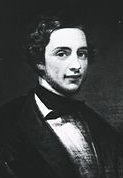
About 1,600 B.C.E. the oldest surgical treatise on trauma to survive to modern times, the Edwin Smith Papyrus is written during the Egyptian Second Intermediate Period (by first known physician Imhotep?), describing 48 cases of injuries, fractures, wounds, dislocations, and tumors, with treatment and prognosis, incl. closing wounds with sutures, using honey and moldy bread as antiseptics, stopping bleeding with raw meat, and immobilization for head and spinal cord injuries; magic is left as a last resort; it also contains detailed anatomical observations but shows no understanding of organ functions; the earliest known reference to cancers or ulcers of the breast; discovered in Luxor in 1862 C.E. by Am. antiquities dealer Edwin Smith (1822-1906).
About 1,580 B.C.E. Egyptian (Theban) princess Ahmose Meryet Amon becomes the earliest known human diagnosed with coronary artery disease.


About 1,550 B.C.E. the Ebers Papyrus is created in Luxor, Thebes, Egypt, describing diagnosis and treatment of various medical ailments incl. depression and dementia, mentioning that the heart is the center of the blood supply and all bodily fluids, and listing 877 drug prescriptions; discovered in 1873-4 by German Egyptologist Georg Mortiz Ebers (1837-98).
About 1,000 B.C.E. the Chinese use moldy soybean curd as an antibiotic on wounds.
About 600 B.C.E. Sushruta (Sansk. "well-heard") of Varanasi, India becomes the first plastic surgeon and father of surgery, leaving a Compendium, containing descriptions of 1,120 illnesses, 700 medicinal plants, and detailed surgical techniques for incisions, probing, cauterization, prostate gland removal, hernia surgery, cataract surgery, Caesarian section et al.
In the last decade of the 5th cent. B.C.E. Greek physician-historian Ctesias of Cnidus (the Cnidian) (-400) of the Cnidian School of Medicine (rival to Hippocrates) flourishes, becoming physician to Achaemenid king Artaxerxes II and accompanying him on his 401 B.C.E. expedition against his brother Cyrus the Younger, going on to write Persica (23 vols.) (a reply to Herodotus founded in the Persian royal archives) and Indica, the first full monograph on NW India, giving the Persian view, describing a land full of fantastic monsters incl. elephants and talking parrots, containing the first Western description of a unicorn, a white beast with blue eyes, purple head, and multicolored horn, which cures epilepsy, along with a description of Indian medicine, along with a statement that Indians disdain death; he also writes a treatise on medicine (lost), On the Tributes of Asia (lost), and Periodos (Periegesis) (Periplous) (3 vols.), a geographical treatise on Asia incl. Egypt, the Black Sea region, and Italy.

About 400 B.C.E. 60-y.-o. Hippocrates of Cos (-460 to -377) of the island of Cos in Greece becomes "the Founder of Western Medicine", teaching that diseases have natural causes, proposing the Four Humors (Temperaments) (sanguine, choleric, melancholic, phlegmatic) theory of disease, theorizing that mental disorders may be caused by physiological abnormalities; teaches that wounds should be washed in water that had been boiled or filtered, and that a doctor's hands should be kept clean and his nails clipped short, becoming the first to distinguish benign from malignant breast tumors, advocating withholding treatment for "hidden" cancers, with the soundbyte that surgery causes "a speedy death, but to omit treatment is to prolong life"; Aristotle later calls him the "great physician"; the Hippocratic Oath, drafted by him or his students incl. "Primum non nocere" ("The first rule is do no harm"); it begins "I swear by Apollo, the physician, by Aesculapius, by Hygieia, Panacea, and all the gods and goddesses... The regimen I adopt shall be for the benefit of my patients according to my ability and judgment, and not for their hurt or for any wrong. I will give no deadly drug to any, though it be asked of me, nor will I counsel such, and especially I will not aid a woman to procure abortion..."; he determines that the male contribution to a child's heredity is carried in the semen - matriarchial religions are f-ed? He also writes Aphorisms; "Life is short, and Art is long" (Vita breva, Ars longa) - is there a doctor in the Acropolis? He leaves the soundbyte: "Let food be thy medicine and medicine be thy food."
In summer 354 B.C.E. Philip II of Macedon captures Methone (Methoni) in Pieria after a long siege, during which he takes an arrow in the right eye from a sniper while inspecting siege machinery, but luckily his helmet deflects its trajectory, and Greek physician Critobulus of Cos uses the Spoon of Diokles to extract the arrowhead, saving his life although he loses the eye; he then advances into Thessaly.
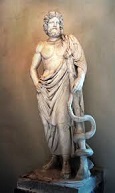
About 350 B.C.E. Pergamum (Pergamon) (Pergamos) in Asia Minor, whose acropolis atop a 1300-ft. cliff above the Calcus River gives it an excellent view of the Bay of Lesbos becomes known for its worship of Asclepius (Asclepios) (Asklepios), the god of medicine and healing (son of Apollo), known for his snake-entwined (no wings like Hermes' Caduceus) Rod of Asclepius that becomes a symbol of medicine; his daughters are Hygieia (cleanliness), Isaso (recuperation), Aceso (healing process), Aglaea (Aegle) (beauty), and Panacea (universal remedy); Epidaurus (Epidoros), his alleged birthplace becomes the #1 healing center of the ancient Greek-Roman world, lasting until the mid-5th cent. C.E. as a Christian healing center - the first free clinic for the treatment of sexually-transmitted disease?

In 335 B.C.E. Stagira, Macedonia-born Greek Golden Mean philosopher (the first scientist?) Aristotle (Gr. "best (purpose) of all") of Stagira (-384 to -322) parts ways with Plato and founds the Lyceum in E Athens, becoming the teacher of undefeated world conqueror Alexander III the Great, preferring to collect data rather than sit around thinking, and (after much personal experimentation?) deciding that all inheritance comes from the father, the mother merely providing the material, and that female babies are caused by "interference" from the mother; he leaves 260 treatises, incl. Constitution of Athens (written in -350) (discovered in 1890 C.E.), Physics, Metaphysics, Ethics, Logic, Zoology, De Anima (On the Soul) (the nous poietikos or active intellect vs. the nous pathetikos or passive intellect), which first mentions the Tabula Rasa view of the mind as starting out a blank slate, and Poetics, the first work on art criticism, valuing art based on how it imitates the universal in human nature, and claiming criticism as a science: "Man is by nature a political animal"; "Hope is a waking dream"; "Tyrants preserve themselves by sowing fear and mistrust among the citizens by means of spies, by distracting them with foreign wars, by eliminating men of spirit who might lead a revolution, by humbling the people, and making them incapable of decisive action"; "Music directly represents the passions of the soul. If one listens to the wrong kind of music, he will become the wrong kind of person."
In 305 B.C.E. the Nei Jing, (the Yellow Emperor's Classic of Medicine), the earliest book of Chinese medicine is compiled.
In 295 B.C.E. Greek physician ("the Younger Hippocrates") Diocles of Carystus (b. -375) dies after writing the first medical treatise in Attic (not Ionic), and inventing a surgical instrument for the extraction of arrowheads called the Spoon of Diocles (Dioclean Cyathiscus); also leaves A Letter on Preserving Health, addressed to Antigonus II Gonatas of Macedon (-319 to -239).

In 294 B.C.E. Greek physician Erasistratus of Ceos (-304 to -250) diagnoses Seleucis I Nicator's eldest son Antiochus I Soter as lovesickness, and when asked who it is, he claims it's his own wife, causing Seleucus I to pontificate that he should give her up, whereupon he reveals that it's really his own hot new queen Stratonice, causing Seleucus I to give her up; Erasistratus goes on to co-found the Medical School of Alexandria with Herophilus of Chalcedon (-335 to -280); after doing the first dissections (vivisections)? Erasistratus studies the brain, distinguishing between the cerebrum and cerebellum; Herophilus studies the nervous system, distinguishing between sensory and motor nerves.
In 265 B.C.E. the Romans first learn about Greek medicine from captured POWs.

In 232 B.C.E. Indian king (since -268) Ashoka (Asoka) (Sansk. "without sorrow") Maurya (the Great) (-304 to -232) dies after erecting a series of stone pillars dedicated to Buddha containing his edicts, incl. at his alleged birthplace in Lumbini, Nepal, exempting the region from taxes; one edict orders hospitals to be built along the routes of travelers, and that they be "well provided with instruments and medicine, consisting of mineral and vegetable drugs, with roots and fruits"; "Whenever there is no provision of drugs, medical roots, and herbs, they are to be supplied, and skilful physicians appointed at the expense of the state to administer them"; too bad, when Buddhism falls ca. 750 C.E., the system of public hospitals and medical schools become kaput.
About 100 B.C.E. the 8-vol. Charaka (Sansk. "wanderer") Samhita Sanskrit manual on Ayurveda medicine is written, stating that good medical practice requires a patient, physician, nurse, and medicines, with the physician's job being to "explore the dark interior of the body with the lamp of knowledge", requiring him to express joy and cheer towards those who can respond to treatment, masterfully avoid and save time in cases where the patient suffers from incurable disease, while being compassionate towards all; the nurse must be knowledgeable, skilled at preparing formulations and dosage, sympathetic towards everyone, and clean; the patient is responsible for being positive, have the ability to describe how he or she feels, and remember and respectfully follow the physician instructions.
About 50 B.C.E. Greek physician Asclepiades of Bithynia (-129 to 40) founds the Methodic School of Medicine, which claims that disease is based on the flow of atoms through pores in the body, advocating hygenic methods (bathing, dieting exercise), and dissing drugs.
So divideth the B.C.E., the Don't-Say-B.C.-Before-Christ Butt Crack of Eternity (Before Common Era) from the C.E., the Don't-Say-A.D.-Anno-Domini-Year-of-the-Lord-Christ Scratch-and-Dent-Sale Common Era?
About 1 C.E. Cicilia-born Greek physician Athenaeus of Attalia, pupil of Posidonius flourishes in Rome, founding the Pneumatic School of Medicine, which breaks from the Methodic School by claiming that the cause of health or disease is pneuma (spirit).

About 50 C.E. Roman brain man Aulus Cornelius Celsus (-25 to 50) dies, leaving De Medicina (8 vols.), becoming the #1 medical text of the ancient Romans, with info. about diet, drugs, surgery, dermatology et al.; describes the "dilated tortuous veins" surrounding a breast cancer, causing Galen to later give cancer (Lat. crab) its name, describing four clinical stages of evolution of breast cancer, starting with cacoethes (benign lesion), recommending teatment first by caustics followed by surgical excision and cauterization for this stage only, warning against doing it for the other three stages because it might "irritate" the process and kill the patient; he also advises against removal of the pectoral muscles along with the breast; Bk. 3 addresses mental diseases - his image bears a striking resemblance to Jesus, er, naw? In 1478 it is printed in Florence, Italy, spurring research in surgery.
About 50 C.E. Sparta-born Greek physician Agathinus, pupil of Athenaeus of Attalia flourishes in Rome, founding the Episynthetic School of Medicine, which adopts opinions from any and all schools even if contradictory.
About 50 C.E. Phoebe, a deaconess sent by St. Paul to Rome becomes the first known nurse (Romans 16:1).

In 90 C.E. Greek physician (with the Roman army) Pedanius Dioscorides (40-90) dies, leaving De Materia Medica (5 vols.), containing 600+ animal, vegetable, and mineral remedies, and describing 500 plants, preserving their Dacian and Thracian names; the book is used until the 17th cent. C.E.
About 100 C.E. Greek physician Archigenes, son of Philippus, pupil of Agathinus practices in Rome under the reign of Trajan, becoming a star, founding the Electic School of Medicine, making several disciples and leaving a treatise on the pulse, which Galen writes a commentary on; too bad, he casts his medical works in a dialectic form, causing them to be filled with moose hockey, introducing many new and obscure terms.

In 159 C.E. Greek #1 physician Galen (Claudius Galenus) (Gk. "healer") (129-201) is appointed to the gymnasium attached to the Temple of Asclepius in Pergamum, Mysia (modern-day Bergama, Turkey), where he does animal (not human) dissections and goes on to establish that arteries carry blood and not air, and that blood is created in the liver, first using the pulse as a diagnostic tool; he elaborates on Hippocrates' vital humor theory that the body contains four vital fluids or humors (blood, yellow bile, black bile, phlegm), and that disease is due to an imbalance, pioneering the use of ligatures and becoming known as "the king of the catgut suture", viewing pus as beneficial; he coins the term "tumor" for cancer, from the Latin word "tymbos" for spherical mound, and views cancer as a result of melancholia caused by an excess of black bile, proven by its frequent occurrence in postmenopausal females, recommending surgical excision of a cancerous breast through healthy tissue to make sure that not "a single root" is left behind, discouraging ligatures and cautery to allow drainage of black bile; he leaves a physiological model of the human body that becomes the std. for anatomy for cents.; he leaves 500+ works (10M words) written down by 20 scribes, representing half of all lit. from ancient Greece to survive to modern times; too bad, little is translated into Latin, so that only the Byzantines read it until the Muslim Abbasids (750-) tr. some of it into Arabic, and only after the fall of Constantinople to the Muslims in 1453 do Greek scholars head W with his mss., incl. Ars Medica, which tries to preserve the Greek attribution of mental properties to bodily functions; On the Passions and Errors of the Soul; De Motu Musculorum (2 vols.), which explains the difference between motor and sensory nerves, mentions muscle tone, and differentiates agonists from antagonists; That the Best Physician is Also a Philosopher, and On the Natural Faculties (De Naturalibus Facultatibus) (3 vols.), which is pub. in London in 1523 - and Vicodin is cool to pop?
About 180 C.E. Leonidas of Alexandria becomes a physician and surgeon, following Galen in advocating the excision of breast cancer via a wide cut through normal tissues, but recommending alternate incision and cautery, which becomes the std. for the next 1.5K years; he provides the first detailed description of a mastectomy, incl. the first description of nipple retraction as a clinical sign of breast cancer, and advocates systemic "detoxification of the body" both pre and post-op.
A gynecologist with a sore anus took a hypocritical oath? In the 2nd cent. C.E. Greek physician Soranus of Ephesus dies, leaving "On Acute and Chronic Diseases" (describing the Guinea Worm), "Treatise on Gynecology" (4 vols.), "De Anima" (4 vols.) (which divides the soul into seven parts and denies its immortality), "Two Treatises on Pharmacy", and The Life of Hippocrates [fl. 400 B.C.E.], the earliest surviving bio. and source of most info. on him.
In the 2nd cent. C.E. an Egyptian papyrus containing wisdom texts is written, revealing that the goddess Isis gave as much power and honor to women as to men, permitting them to own property, practice professions include medicine, and serve as witnesses, plaintiffs, and defendants in court.
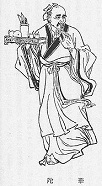
In 208 C.E. Chinese physician Hua Tuo (Yuanhua) (140-208) dies after becoming the first in China to use anaesthesia during surgery, using wine mixed with cannabis, leaving the first written record of tea drinking, and developing the Exercise of the Five Animals (tiger, deer, bear, ape, crane).
In Dec. 212 C.E. Roman physician Quintus Sammonicus Serenus (b. ?) is killed at a banquet by Emperor Caracalla; he leaves the medical poem De Medicina Praecepta Saluberrima (Liber Medicinalis), containing the Abracadabra (Heb. "It came to pass as it was spoken") cure for fever and ague.
About the 3rd cent. C.E. Jewish physician Asaf ha Jehudi (Asaph the Jew) leaves a ms. (oldest known medical work in Hebrew) teaching that the blood circulates through the arteries and veins, which is lost until modern times - he was afraid they'd think he had hairy palms?
About the 3rd cent. C.E. Jewish physician Asaf ha Jehudi (Asaph the Jew) leaves a ms. (oldest known medical work in Hebrew) teaching that the blood circulates through the arteries and veins, which is lost until modern times - he was afraid they'd think he had hairy palms?
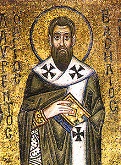
On June 14, 370 anti-Arian theologian St. Basil the Great (330-79) becomes Greek Orthodox bishop of Caesarea Mazaca in Cappadocia, Asia Minor, going on to build a city-like hospital complex called the Basiliad.
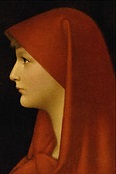
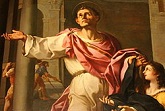
About 390 C.E super-rich noble Roman Christian ascetic nurse St. Fabiola (d. 399) builds Rome's first hospital, moving to Bethlehem in 395 to work in the hospice of the convent under St. Paula and St. Jerome before moving back to Rome and building a large hospice for pilgrims in Porto at the mouth of the Tiber River opposite Ostia with St. Pammachius (-409).
In 476 C.E. the Fall of the Western Roman Empire plunges Europe into the Dark Ages, ending scientific progress in medicine and surgery.
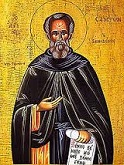
In 530 C.E. Roman-born Byzantine physician-priest Sampson the Hospitable (b. ?) dies in Constantinople; his hospital, built with aid from Emperor Justinian I the Great becomes the largest free clinic in the Byzantine Empire, lasting for 6 cents.
In the 6th cent. C.E. Arab physicians regularly prescribe cannabis for all sorts of maladies.
In 632 C.E. Islam founder Muhammad (570-632) dies, causing his followers to launch the Great Jihad, emerging from Arabia in small armies that systematically conquer the Persians and Byzantines and take over the Holy Land and North Africa to create a New World Order, with a lucky few allowed to translate captured Greek, Latin, and Persian mss. into Arabic and do something with them without too much fear of the superstitious mobs; Muslim nursing begins in Muhammad's day with Rufaidah bint Sa'ad of the Bani Aslam tribe in Medina.

In 782 Arab (al)chemist-physician ("Father of Arab Chemistry") Abu Musa Jabir (Geber) (Gebir) ibn Hayyan (721-815) begins to study chemistry as distinct from alchemy: calcination, oxidation, congelation, fixation, solution, digestion, distillation, evaporation, sublimation, separation, extraction, ceration, fermentation, putrefaction, propagation, projection. He dies after allegedly discovering methods for preparing sulfuric acid, nitric acid, aqua regia, and silver nitrate; by the 10th cent. 100+ anon. works are written using his name, after which Euro alchemists of the 12th and 13th cents. escape the Inquisition by doing ditto.
In 873 Arab Nestorian Christian physician ("Sheikh of the Translators") Hunayn ibn Ishaq (b. 809) dies in Baghdad after becoming Caliph al-Mutawakkil's personal physician, leaving a ton of Arabic translations of Greek medical-scientific texts incl. Dioscorides' "De Materia Medica", 129 of Galen's works, plus original works incl. How to Grasp Religion, and Ten Treatises on Opthalmology, the first systematic treatment.
In the 9th cent. C.E. the Medical School of Salerno (Schola Medica Salernitana) in SW Italy is founded in a monastery, making use of Arabic medical texts and reaching its zenith in the 10th-13th cents; in 1155 a medical school is founded in Salerno by 20 physicians, becomining known as the Civitas Hippocratica (Town of Hippocrates).

In 925 Persian #1 Muslim physician ("the Islamic Hippocrates") Abu Bakr Muhammad Ibn Zakariya al-Razi (Rhazes) (854-925) dies after becoming the first to use mercurial ointment, animal gut for sutures, and plaster of Paris for casts, pioneering opthalmology and founding pediatrics, leaving 131 books, incl. the 20-vol. Kitab al-Hawi (Liber Continens), containing a pharmacopeia, listing 50 methods of contraception; Treatise on Smallpox and Measles, the first accurate study of infectious diseases, and first to diagnose the difference between smallpox and measles; Kitab al-Mansuri (Liber Almansoris) (9 vols.); vol. 9 "Nonus Almansoris" is popular in Europe until the 16th cent. He goes on to become one of the top two Muslim medical writers studied at the U. of Paris along with Avicenna.
In 932 Egyptian-born Jewish physician-philosopher Isaac Israeli ben Solomon (b. 832) dies in Kairouan, Tunisia, leaving a bunch of medical and philosophical works written in Arabic that are translated into Hebrew, Latin, and Spanish, becoming part of the curriculum in European univs. in the early 13th cent., incl. The Book of Fevers (Kitab al-Hummayat) (5 vols.), The Book of Remedies (Kitab al-Adwiyah al-Mufradan wa'l-Aghdhiyah), Treatise on Urine (Kitab al-Baul), The Book of Antidotes (Kitab fi al-Tiryak), The Book of Elements (Kitab al-Istikat).
In 994 Ahvaz-born Shiite Muslim Persian physician Ali ibn al-Abbas al-Majusi (b. ?) dies after serving as physician to Buyid emir (949-83) Adud al-Dawla Fana Khusraw (936-83), working at the Al-Adudi Hospital in Baghdad, leaving The Complete Book of the Medical Art (Kitab al-Maliki), a textbook on medicine and psychology, describing a scientific research methodology, stressing the need for medical ethics and preserving health through diet instead of drugs, and discussing the anatomy and physiology of the human brain along with various mental disorders.
About 1000 C.E. Arabs and Jews begin arriving in backwards Germany to become court physicians.

In 1013 Cordoba-born Muslim physician-surgeon-chemist Abu al-Qasim Khalaf ibn al-Abbas al-Zahrawi (Albucasis) (b. 936) dies after becoming the first to identity hemophilia as hereditary and describe an abdominal pregnancy, leving the 30-vol. Kitab al-Tasrif (The Method of Medicine), becoming the leading Euro medieval textbook on surgery until the Renaissance, causing him to be called "the Father of Surgery".

In 1025 Persian Muslim brain man (polymath) Avicenna (Ibn Sina) (980-1037) writes Al-Qanun fi at-Tibb (The Canon of Medicine) (5 vols.), which synthesizes Greek and Arab medicine, basing medicine on experiment and reason, dominating backward Western medicine until the mid-17th cent. In June 1037 he dies, leaving 450 works incl. Kitab al-Shifa (Kitab ash-Shifa bi ta'rif huquq al Mustafa) (Book of Healing by the Explanation of the Rights of the Chosen One) (AKA Sufficientia) (18 vols.), an attempt to describe all scientific and philosophic knowledge; also Kitab al-Najat (Book of Salvation), an abridged vers. of the preceding, giving the "flying man argument" for the distinction between the body and soul, which must be strong enough to ensure its individuality, but weak enough to allow for its immortality; he also founds physiological psychology for the treatment of illnesses involving emotions, developing a system for associating changes in pulse rate with inner feelings, and developing the Tabula Rasa concept beyond Aristotle; also Proof (Demonstration) of the Truthful (Veracious), a formal argument for the existence of God, claiming that he can't not exist, making fans of Maimonides, Duns Scotus, and Thomas Aquinas.
The reason that academics are full of bologna? In 1088 after city laws impose collective punishments on each "nation" of foreigners, causing them to turn into collective bargaining groups and end up hiring scholars to school them, the U. of Bologna in Italy is founded to study the balogna of the law independent of the balogna of the ecclesiastical schools, becoming the oldest univ. in Europe ("Alma Mater Sudiorum"), producing Dante, Petrarch, Torquato Tasso, Vesalius, Galvani et al. as students and faculty; in 1219 it begins training physicians, competing against the U. of Padua.
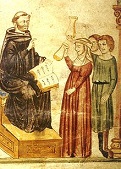
In 1099 North African Muslim-turned-Christian Benedictine monk Constantine the African (Constantinus Aficanus) (b. ?) dies in Monte Cassino Abbey, Italy after bringing a load of Arabic medical works with him and translating them into Latin, introducing the examination of urine and other advanced practices.
In 1123 St. Bartholomew's Hospital (AKA Bart's) in Smithfield, London is founded, becoming the oldest hospital in Europe.
In 1151 the Schola Medica Salernitana is founded in Salerno, S Italy by 20 physicians, becomining known as the Civitas Hippocratica (Town of Hippocrates).
In 1156 Nur-ud-din founds the Al-Walid Hospital (Bimaristan) in Damascus, which gives free treatment incl. drugs for 267 years (until 1427).

In 1162 Spanish Muslim physician Avenzoar (Ibn Zuhr) (1094-1162) dies in Seville after having performed the first tracheotomy on a goat, leaving Book of Simplification on Therapeutics and Diet (Kitab al-Tasir), written at the request of his friend Averroes, who calls him the greatest physician since Galen; it covers clinical descriptions of pericarditis, mediastinal tumors, intestinal tuberculosis, and pharyngeal paralysis, describing the use of bezoar stones (gastroliths) as medicinal items, becoming a hit in Latin and Hebrew translation.
In 1162 the Council of Tours in France bans the "barbarous practice" of surgery for breast cancers.

In 1169 Cordoba-born Spanish Muslim brain man Averroes (Abu'l Waleed or Abu al-Walid Muhammad ibn Rushd) (1126-98) begins writing on Aristotle's works in Arabic, stirring to keep their sanity and faith at the same time; too bad, he doesn't read Greek, and has to use Arab translations of Syriac translations of Aristotle; like other Muslim brain men he Neoplatonizes Aristotle, but doesn't stop with minimizing him to save the dogmas of Islam, but minimizes Islam to fit Aristotle, even discarding the Creation for an eternal Universe, causing the Muslim World to turn against him and destroy most of his works in Arabic form, which are only saved by the Jews, who hand them to Christians, who groove on his slamming of Muhammad's dogmas until they go too deep and become rationalists, heretics, or atheists. He becomes the first to explain the function of the retina, and to recognize acquired immunity with smallpox. He dies in 1198, leaving Encyclopedia of Medicine (Kitab al-Kuyat fi al-Tibb) (1161), which becomes a hit in the West, and Tuhafut al-Tuhafut (Destruction of the Destruction), a reply to al-Ghazili, saying that deep study of philosophy will lead one out of atheism, albeit after giving up the dogmas of literal religion, so that the rulers should protect them while they combat the bad philosophers, and that in the meantime the uneducated masses should be allowed to have literal religion, and that philosophers, who should only accept it symbolically shouldn't criticize it as long as they in turn are not harassed.
About 1180 Italian surgeon Rogerius Salernitanus (Roggerio dei Frugardi) (1139-95) pub. The Practice of Surgery (Practica Chirurgiae), which becomes a std. work in European univs.; 2nd ed. pub in 1250 by his pupil Rolandoo de Parma of the U. of Bologna; helps turn surgery from amateur butchery to a profession.

About 1190 after moving to Fez, Morocco in 1159, pretending to be Muslim for nine years, then to Alexandria and Cairo in 1165, becoming chief physician of Saladin's vizier al-Qadi al-Fadil al-Baisani and Saladin's eldest son Nur-ud-Din Ali, rising to Ra'is al Yahud (Nagid) in 1176 (1177?), and going on to talk Saladin into letting Jews settle again in Jerusalem after he conquers it in 1187, Cordoba, Spain-born Sephardic Jewish philosopher Moses Maimonides (1135-1204) AKA Rambam (Rabbeinu Mosheh Ben Maimon) writes Guide for the Perplexed (Moreh Nevukhim or Nebuchim) (Delalatul Ha'yreen), one of the great philosophic statements of Judaism, attempting to reconcile Moses with Aristotle, fostering scholasticism and influencing Thomas Aquinas et al.; it tries to explain which words in the Bible should be taken literally, metaphorically, and symbolically, accepting the Creation but dissing personal immortality, Aristotelizing Bible stories, e.g., Abraham and Sarah represent matter and form, Adam is the active spirit, Eve is passive matter (the root of all evil), and the serpent is imagination, pissing-off orthodox rabbis, who accuse him of "selling the Scriptures to the Greeks", and Qabbalists, who desecrate his tomb; "My primary object is to explain certain words occurring in the prophetic books"; "A thing which has in itself the necessity of existence cannot have for its existence any cause whatever"; "Everything except God has been brought into existence out of nonexistence"; "Incorporeal entities can only be numbered when they are forces situated in a body"; written "to promote the true understanding of the real spirit of the Law, to guide those religious persons who, adhering to the Torah, have studied philosophy and are embarrassed by the contradictions between the teachings of philosophy and the literal sense of the Torah"; the main purpose is to expound on Maaseh Bereishit and Maaseh Merkavah, works of Jewish mysticism regarding the theology of creation from Genesis and the passage of the Chariot from Ezekiel, the two main mystical texts in the Tanakh (Hebrew Bible); written in Arabic in Hebrew chars., it is trans. into Hebrew in 1199-1204 by Samuel ben Judah ibn Tibbon, and also into Latin, causing a firestorm of controversy; "The first who openly declared that Scripture must be accomodated to reason" (Baruch Spinoza).
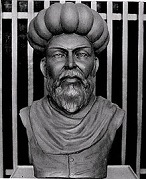
In 1213 Arab physician superbrain (in Egypt) Ala al-din (Alaeddin) Abu al-Hassan Ali ibn Abi-Hazm al-Qarshi al-Dimashqi (AKA Ibn al-Nafis) (d. 1288) is born in Damascus, Syria, becoming the first to describe the pulmonary circulation of the blood 400 years before the backward European William Harvey (1628).
In 1214 Hugh of Lucca is appointed surgeon for Bologna, Italy for 600 Bolognini/year, with his contract requiring him to join the Fifth Crusader army in Egypt, where he discovers that wine cleans and disinfects wounds, and that pus is unhealthy and not what other doctors call "praiseworthy pus" that cleans toxins from blood.
About 1220 after a large group and students and professors walk out of the U. of Bologna in search of more academic freedom, HRE Frederick II founds the U. of Padua in Italy to teach law and theology, followed in 1222 by medicine, and by 1399 it divides into two schools, one or civil and canon law, and the other for medicine, grammar, rhetoric, dialectic, philosophy, and astronomy; in a mere three cents. it becomes home to one of the first botanical gardens in Europe (1545), and produces giants incl. Andreas Vesalius and Galileo Galilei; in 1595 its anatomical theater begins performing public dissections.

On June 25, 1243 Sinbaldo de' Fieschi, Genoan Count of Lavagna is elected Pope (#179) Innocent IV (-1254); Theodoric Borgognoni of Lucca (1205-98), student of Hugh of Lucca becomes his surgeon, breaking with Galen and his love of pus and cleaning and suturing wounds, soaking bandages with wine to disinfect them, and using opium, hemlock, mandrake, and other anesthetics in surgery, leaving Chirurgia (4 vols.); "For it is not necessary that bloody matter (pus) be generated in wounds - for there can be no error greater than this, and nothing else which impedes nature so much, and prolongs the sickness."
About 1250 Jewish physician (in Jerusalem) Benevenutus Grassus Hierosolimitanus (-1290) pub. Practica Oculorum, which becomes a hit in the Muslim and Christian worlds, becoming the first work on opthalmology printed with the printing press in 1474.
In 1256 Arab Muslim physician Khalifah ibn-abi'l-Mahasin of Aleppo performs a cataract operation on a 1-eyed man, leaving a comprehensive ocular manual.
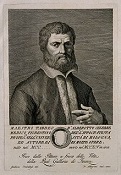
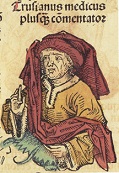
In 1261 Florence, Italy-born Taddeo Alderotti (Thaddeus Florentinus) (1206-95) begins teaching medicine at Bologna U., becoming the first to organize a medical lecture at a univ. and helping the renaissance of learned medicine in Europe; he also invents fractional distillation; Dante disses him for pursuing learning for wordly instead of spiritual reasons like St. Dominic; his student Turisanus de Turisanus (Pietro Torrigiano de'Torrigani (-1320) teaches medicine in Paris in 1305-19, becoming the first medieval Euro physician to propose his own theory about human blood and its role.
In 1267 the Council of Vienna forces Jews to wear the pileum cornutum (a cone-shaped headdress) in addition to a special badge, and forbids Jewish physicians to treat Christians, which doesn't stop Christian popes (Boniface VIII), kings (James I of Aragon, Ferdinand II and Isabella I), monasteries, nunneries et al. from employing them.
In 1275 William of Salicet (Guglielmo da Saliceto) (1210-77) of the U. of Bologna writes Chirurgia, breaking with Galen by claiming that pus formation is unhealthy, and promoting the use of a surgical knife (scalpel) over cauterization, lecturing on the importance of regular bathing for infants and hygiene for pregnant women.
About 1275 Jewish physician Abu Al-Mina Al-Kuhin al-Attar pub. a pharmacopia that becomes a hit in the Muslim World until modern times.
In 1284 Egyptian Bahri Mamluk sultan #7 (1279-90) Al-Mansur Qalawun (1222-90) founds the Maristan al-Mansuri, the greatest hospital of the Middle Ages, which provides free medical and mental treatment, and provides dischargees with money so they don't have to return to work immediately.

In 1289 Pope (1288-92) Nicholas IV (1227-92) issues a bull combining several schools dating back 100+ years into the U. of Montpellier in Montpellier, France on the Lez River 31 mi. SW of Nimes, with the school of medicine starting out on the wrong foot by claiming that the Black Death is caused by a miasma entering open body pores, arguing against bathing; in 1529 it expels student Nostradamus for having worked as an apothecary; alumni later incl. Rabelais and Paul Joseph Barthez; in 1593 it founds the Jardin des Plantes de Montpellier, becoming the first botanical garden in France.
About 1300 back in the heart of backward Christendom, Siena, Italy-born nurse St. Alda (Aldobranesca) (1249-1309) allegedly cures patients by making the sign of the cross over them - write that name on your chalkboard?
In 1300 Pope Boniface VIII issues the bull De Sepulturis, forbidding the practice of cutting up corpses of dead Crusaders and boiling them down to send their bones back home; it doesn't prohibit medical dissection?

In 1303 Averroist prof. of medicine at the U. of Padua Pietro d'Abano (1250-1316), pub. Conciliator Controversiarum, attempting to harmonize medical and philosophical theory; he teaches that the brain is the source of the nerves, and the heart of the blood vessels, and measures the year as 365 days 6 hours 4 min.; too bad, his claim that all causation is caused by the stars, eliminating God from the equation gets him accused of heresy, but his patients Pope Honorius IV and Marquis Azzo d'Este protect him until 1315, when he escapes an Inquisition trial by a natural death, his friends hiding his body so well they have to execute him in effigy.
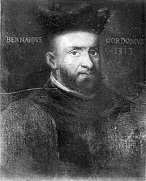
In 1303 prof. of medicine at the U. of Montpellier Bernard de Gordon pub. Practica seu Lilium Medicinae, which describees anthrax, plague, TB, scabies, epilepsy, and leprosy, and contains the first Euro medical reference to spectacles.

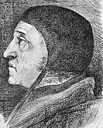
By 1308 the Worshipful Co. of Barbers in London is in operation, with Richard le Barber as master, relieving the clergy of the prohibited practice of spilling blood incl. bloodletting and leeching, shaving, haircutting and hairdressing, lancing of boils, teeth extraction, and other kinds of surgery; in the 14th cent. Barbers' Hall is established on Monwkwell St. in London; in 1368 after too many quacks join, surgeons are permitted to form their own unincorporated Guild of Surgeons, with the power to oversee all surgical practices, receiving a royal charter in 1462 before merging in 1540 to form the Co. of Barbers and Surgeons, led by Henry VIII's royal surgeon Thomas Vicary (1490-1561), with both professions allowed to extract teeth; in 1546 Vicary becomes suptd. #1 of St. Bartholomew's Hospital; the barber pole begins displaying red stripes for surgery and white ones for haircutting and teeth extraction; barbers are paid higher wages until surgeons begin working on British ships during naval wars; the co. is licensed to perform dissections of the cadavers of executed criminals, with four held each year in Barber-Surgeon's Hall, with Vicary establishing the first formal teaching of anatomy in England; in 1745 the surgeons seek to distance themselves from their lowly "basin barber" brethren, and establish the Co. of Surgeons in London (until 1800); the barbers get the pole, which represents bloody rags hung out to dry, topped by a brass basin to catch the blood during bloodletting.
In 1315 the first public human dissection is performed in Italy by Mondino de Luizzi (1258-1326), who pub. Anatomia (De Anatome), the first practical dissection manual this year, used by Euro medical schools for the next three cents.
About 1328 Greek Byzantine physician Johannes (Joannes) Zacharias Actuarius (1275-1328) dies, leaving the last geat compendium of Byzantine medicine, incl. "De Methodo Medendi" (6 vols.), "De Urinis" (7 vols.), and "De Actionibus et Affectibus Spiritus Animalis, ejusque Nutritione" (2 vols.).
In 1335 Italian physician Guido da Vigevano (1280-1349) becomes royal physician to Philip VI and Joanna I of Navarre, and expecting him to go on Crusade, composes the 23-folio book Texaurus Regis Francie, with nine folios on how to take care of his health, and 14 folios on hi-tech Medieval military technology, containing sketches sans perspective of his inventions, incl. armored chariots, siege engines, and wind-driven battle wagons (the first automobile?); in 1345 he pub. Anatomia Designata per Figures, which incl. 24 anatomical plates, becoming the first neuroatonomical descriptions and drawings in scientific history.
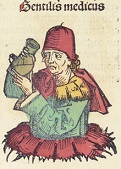
On June 18, 1348 Italian physician (pioneer in cardionephrology) Gentile da Foligno (b. ?) dies of the plague after becoming known for applying the "art of latitudes" to Galen's physiology; leaves Consilia.
About 1350 the Black Death (Great Plague) decimates Europe, killing 30%-60% of its pop., and reducing world pop. from 405M to 350M, which doesn't recover until the mid-17th cent.
On May 29, 1453 the Fall of Constantinople to the Ottoman Muslims causes an exodus of scholars to the West, bringing their medical-scientific mss. with them.
In 1456 Duka Francesco I Sforza of Milan founds Ospedale Maggiore (Big Hospital) (Ca' Granda), AKA Ca' Granda (Big House), the largest community hospital of the 15th cent. AKA the Policlinico of Milan.
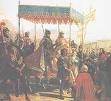

 In Jan. 1495 Charles VIII of France leads an army of 50K through Pavia, Florence, and Rome into Naples on Feb. 22, and is crowned king of Naples; on Jan. 23
as he is approaching Alfonso II of Naples, spooked by bad dreams he abdicates in favor of his son
Ferdinand II (Ferrandino) (1469-96) (until Sept. 7, 1496),
then flees to a monastery in Sicily and dies on Dec. 18, leaving his splendid Renaissance Poggio Reale and La Duchesca palaces, which
Charles VIII calls "an earthly paradise"; on Mar. 31 fearing for France taking over all of Italy, Maximilian I, Spain, England, Milan,
Doge Agostino Barbarigo of Venice and Pope Alexander VI form the Holy League (of Venice) against him, launching the
Italian War of 1495 against him (ends 1498), sending an army under
Duke Francesco II Gonzaga of Mantua, which forces Charles VIII to beat a hasty retreat from Naples on May 20, arriving in Pisa on June 20;
they carry with them the yummy new disease of syphilis,
brought by Columbus' men from the New World to Naples via the friendly hookers; responding to the Pisan pleas to expel the Florentines, Charles VIII
loses his chance to escape from Italy, and the Holy League tries to block his retreat path to France, resulting in the July 6
Battle of Fornovo (forn for fornication?) 18 mi. SW of Parma (the start of gunpowder warfare?),
after which the League of Venice temporarily expels the French from the Italian peninsula back to the Alps; the Albanian mercenaries loot the
French baggage instead of keeping the French cut-off, allowing them to escape, and this defeat causes the Holy League to break up; Ferdinand II
reconquers Naples, captures the French fleet at Rapallo,
and causes the French army to capitulate at Novara on Sept. 24 (sieged since July 1).
In Dec. Charles VIII of France disbands his army in Lyons, and his lusty men go on to spread syphilis all over Europe (the French call it the Neapolitan disease,
and the Spaniards call it the French disease); Ludovico Sforza brokers a peace between France and the allies, becoming the beginning of the idea
of balance of power in European politics; meanwhile Italian physician
Jacopo Berengario da Carpi (1460-1530)
makes a killing treating syphilis with mercury at hundreds of crowns per patient, paid in advance, getting him an invitation to work for the pope,
which he declines in favor of an appointment to Bologna U., where he goes on to pub. "Anatoma Carpi" in 1535, becoming the #1 anatomist in Europe until Andreas Vesalius.
In Jan. 1495 Charles VIII of France leads an army of 50K through Pavia, Florence, and Rome into Naples on Feb. 22, and is crowned king of Naples; on Jan. 23
as he is approaching Alfonso II of Naples, spooked by bad dreams he abdicates in favor of his son
Ferdinand II (Ferrandino) (1469-96) (until Sept. 7, 1496),
then flees to a monastery in Sicily and dies on Dec. 18, leaving his splendid Renaissance Poggio Reale and La Duchesca palaces, which
Charles VIII calls "an earthly paradise"; on Mar. 31 fearing for France taking over all of Italy, Maximilian I, Spain, England, Milan,
Doge Agostino Barbarigo of Venice and Pope Alexander VI form the Holy League (of Venice) against him, launching the
Italian War of 1495 against him (ends 1498), sending an army under
Duke Francesco II Gonzaga of Mantua, which forces Charles VIII to beat a hasty retreat from Naples on May 20, arriving in Pisa on June 20;
they carry with them the yummy new disease of syphilis,
brought by Columbus' men from the New World to Naples via the friendly hookers; responding to the Pisan pleas to expel the Florentines, Charles VIII
loses his chance to escape from Italy, and the Holy League tries to block his retreat path to France, resulting in the July 6
Battle of Fornovo (forn for fornication?) 18 mi. SW of Parma (the start of gunpowder warfare?),
after which the League of Venice temporarily expels the French from the Italian peninsula back to the Alps; the Albanian mercenaries loot the
French baggage instead of keeping the French cut-off, allowing them to escape, and this defeat causes the Holy League to break up; Ferdinand II
reconquers Naples, captures the French fleet at Rapallo,
and causes the French army to capitulate at Novara on Sept. 24 (sieged since July 1).
In Dec. Charles VIII of France disbands his army in Lyons, and his lusty men go on to spread syphilis all over Europe (the French call it the Neapolitan disease,
and the Spaniards call it the French disease); Ludovico Sforza brokers a peace between France and the allies, becoming the beginning of the idea
of balance of power in European politics; meanwhile Italian physician
Jacopo Berengario da Carpi (1460-1530)
makes a killing treating syphilis with mercury at hundreds of crowns per patient, paid in advance, getting him an invitation to work for the pope,
which he declines in favor of an appointment to Bologna U., where he goes on to pub. "Anatoma Carpi" in 1535, becoming the #1 anatomist in Europe until Andreas Vesalius.
In 1498 the Novo Receptario if pub. in Florence, becoming the first pharmacopeia?
In the 16th cent. the word "doctor" (Lat. "docere" = to teach) gains a medical connotation; late in the 16th cent. the word "nurse" (Lat. "nutrire" = to suckle) gains the meaning of someone who looks after the infirm (Lat. "infirmus" = weak") rather than just a wet-nurse.
In 1509 the first attempt to license medical doctors is made in Europe.
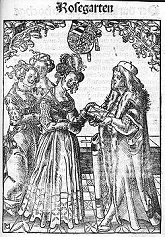
In 1513 Geman physician Euchaius Rosslin (Rösslin) (1470-1526) pub. Der Schwangern Frauwen und Hebammen Rosengarten (Der Rosengarten) (The Rose Garden); Latin tr. pub. by his son Eucharius Rosslin the Younger in 1532 as "De Partu Hominis"; first English tr. by Richard Jonas pub. in 1540 as "The Birth of Mankind"; 2nd English tr. by Thomas Raynalde pub. in 1545 by Thomas Geminus as "The Woman's Booke"; becomes the #1 English ref. work on midwifery for the next cent.




With Catholic indulgences, crime does pay? The papal quest for filthy lucre finally reaps public reaction, creating the Protestant schism? On Oct. 31, 1517 (Wed.) German Roman Catholic Augustinian friar Martin Luther (1483-1546), after becoming sick of the indulgences peddled by Dominican friar Johann Teufel, er, Johann Tetzel (1465-1519) et al., and convinced that 1517 marks the end of the Babylonian Captivity of the Congregation, nails his Ninety-Five (95) Theses (in Latin) to the door of the Wittenberg Palast (Palace) (Castle) Church (known for housing 5K+ holy relics, which he detests), arguing against indulgences and other Roman Catholic Church abuses, claiming that the pope is the Antichrist, "and his seat is that of Satan himself", "the papacy is a general chase, by command of the Roman pontiff, for the purpose of running down and destroying souls", and that "The treasures of indulgences are nets with which they now fish for the wealth of men", igniting the already-smoldering Protestant Reformation (he could have picked a more PC date than Halloween?); his offer of a public debate is declined, but his theses are soon translated from Latin to German and pub., causing the German middle and merchant classes, who are already chafing at Italian efforts at domination to rise to his support in reaction to the fugging Fuggers (successor to the Medicis) and other papal bankers who are draining Germany of gold for Rome with this holy racket (the Fuggers are behind the loans made by Albert of Brandenburg to the pope); the big revelation to Luther that gave him strength was from the Bible, incl. the Seven Trumpets in Rev. Ch. 8, and Rev. 13:5, where it says that the Antichrist will rule the world for 42 mo., which he turns into 1260 years instead of days, setting year 1 in 539 C.E., and claiming that Christ will therefore return in the year 1799, thus it's time to get started whipping things up? - the wildlife experience, more than a museum?
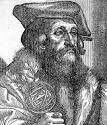
In 1517 Italian physician Hieronymus Fracastorius (Girolamo Fracastoro) (1478-1553) explains fossils as the remains of living organisms, but questions that they all came from Noah's flood - he goes too far up the family tree in his search of genealogy? In 1530 he pub. the poem Syphilis, or the French Disease (Syphilis sive Morbus Gallicus), about a shepherd named Syphilis (who does it with sheep?), giving the venereal disease caused by the spirochete Treponema pallidum its name, containing the germ of the Germ Theory of Disease, later taken up by Louis Pasteur. In Apr. 1546 he pub. On Contagion (De Contagione et Contagiosis Morbis et Eorum Curatione) (3 vols.), the first discussion of contagious infections, suggesting that diseases like syphilis, rabies, and phthisis are like seeds, which he calls (Fomes (Lat. "tinder") that can be transferred from person to person as they "propagate their like" through air, water, etc. via direct contact, indirect contact, or at a distance; "By fomes I mean clothes, wooden objects, and things of that sort, which though not themselves corrupted can, nevertheless, preserve the original germs of the contagion and infect by means of these"; he becomes the first to recognize the disease typhus.
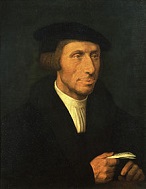
In 1518 the Royal College of Physicians in London is founded by charter from Henry VIII by physician Thomas Linacre (1460-1524), becoming the oldest medical inst. in England.

In 1520 Swiss walking wonder medical student Philippus Paracelsus (Lat. "Greater than Celsus") (Aureolus Theophrastus Philippus Bombastus von Hohenheim) (1493-1541) wanders through Europe, and introduces Laudanum (spiced wine and opium) as a painkiller and cure-all, blissfully unaware of its addictive properties - the original Timothy Leary? In 1528 he pub. Die Kleine Chirurgia, the first Euro surgery manual, which crusades for the use of chemicals in the treatment of disease, pioneering the use of minerals incl. lead and mercury as drugs, and coining the name "zink" (zinc) (Ger. "pointed"), introducing the system of salt, sulfur, and mercury in Opus Paramirum (1530) as the three "prime elements" from which all things are made, inventing chemical therapy and chemical urinalysis, suggesting a biochemical theory of digestion, and coining the term "tartar" for the stony crud on teeth (really saliva plus bacteria), becoming known as "the Father of Toxicology" (grandfather of pharmacology), and "the Devil's Doctor".

In 1524 Pope (1523-34) Clement VII (1478-1534) pub. Poison Trials on Condemned Criminals, describing poison trials conducted on three condemned criminals, touting the antidote oil of Gregorio Caravita.
In 1527 Italian Florentine humanist physician-scholar Lionardo Giachini (Leonardus Jacchinus) pub. Treatise on the Medicinal Virtues of the Melon (Popone), followed in 1533 by Novæ Academiæ Florentinæ opuscula, which disses "barbaric" Arab medicine for the pure medicine of Galen, helping found the Galenic Academy, going on to be called the greatest physician of his time by Girolamo Cardano.

In 1529 Italian humanist physician Giovanni Battista da Monte (Johannes Baptista Montanus) (1498-1551) introduces clinical sickbed examination of patients at the U. of Padua - is there a doctor in the padded house?

In 1537 French barber surgeon Ambroise Pare (Paré) (1510-90), in the service of Francis I during the attack on Turin discovers that soldiers with gunshot wounds that have not been scalded with the usual boiling oil of elders fare better than those who do, causing him to discard the accepted practice and prepare poultices with more humane cold ingredients incl. egg yolks, turpentine, and rose oil, used by the ancient Romans - it's a triple mess-kit cozy? Blue ribbon for best complementary inventions in the same year? In 1540 Pare pares, er, invents the first Artificial Limbs. In 1560 Pare describes the case of 15-y.-o. Champagne region farm girl Marie, who is leaping a ditch when something rips in her crotch, and a penis and two testicles descend through a rip in the skin; the bishop of Chalons rechristens him Germain, and a decade later he is an athletic man of medium height with a thick red beard.



In 1540 after being forced to flee to Paris and change his name to Villanovus, Freethinking Spanish physician Michael Servetus (1511-53) discovers the Pulmonary Circulation of the Blood. On Oct. 27, 1553 Swiss Protestant leader John Calvin (1509-64) burns his theological enemy, Unitarian (non-Trinitarian) Catalan scholar Michael Servetus (b. 1511) (who was captured while fleeing to his protection after escaping a prison of the Spanish Inquisition) in Geneva, executioner Guillaume Farel warning the audience: "(Servetus) is a wise man who doubtless thought he was teaching the truth, but he fell into the hands of the Devil... Be careful the same thing doesn't happen to you"; liberals lose their illusions about Bible-thumpers ever lightening up anything but a faggot, and a corner is turned in the fight for freedom of conscience?; at his trial Servetus is ridiculed for describing Palestine as a sparse, sterile land when the Bible says it's the land of milk and honey; noted noble Paris-educated French Protestant ex-humanist poet Theodore Beza (1519-1605) backs Calvin up - I look bad, feel bad, which is most important?
In 1541 Italian anatomist Giambattista Canano (Canani) (1515-79) pub. an anatomical tract that shows each muscle separately in its relations with the bones.

In 1542 German physician-botanist Valerius Cordus (1515-44) presents his Dispensatorium (a pharmacopeia) to the city council of Nuremberg, which later becomes central to the war between physicians, apothecaries, and midwives.

In 1542 Jean Fernel (1497-1558) pub. De Naturali Parte Medicinae, which establishes his rep as a top French physician, and becomes part 1 of his 3-part Universa Medicina. He becomes the first to observe that when the ventricles contract (systole), the arteries increase in size due to the blood entering them; an accurate understanding of heart circulation is still far off.

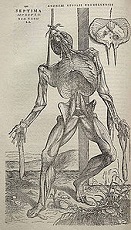
Is it Science or is it Porno? In 1543 after becoming prof. of anatomy at Padua in 1537 (until 1544), founding a school that turns up the heat on the subject no matter whom it shocks, Dutch Flemish anatomist Andreas Vesalius (Andre Vesale) (Andreas Vesal) (Andreas van Wesel) (1514-64) pub. The Fabric of the Human Body (De Humani Corporis Fabrica) (7 vols.), and the companion vol. Epitome (both in Basel), with illustrations by Titian's studio, the first illustrated anatomy of the human body, and the most detailed and extensive to date. Too bad, after being persecuted as a graverobber, sorcerer et al., he dies in poverty in a shipwreck while returning from the Holy Land.


In 1544 Bolognese physician-botanist Luca Ghini (1490-1556) creates the first known Herbarium (Hortus Siccus) in Pisa, gluing dried plants to cardboard; in 1554-8 he is succeeded by Italian physician-botanist Andrea Cesalpino (1519-1603), who is later called to be a prof. of medicine at the U. of Rome and physician to Pope Clement VIII, trying to figure out the circulation of the blood by explaining it as due to repeated evaporation and condensation, getting closer to the truth than anybody until William Harvey, pub. Quaestionum Peripateticarum in 1571; in 1593 he follows with Queaestionum Medicarum (2 vols.), which discusses the circulation of the blood but fails to form any clear picture. In 1596 he pub. De Metallicis (3 vols.) (Rome), a work on chemistry, mineralogy, and geology, showing a correct understanding of fossils, and anticipating some of the discoveries of Antoine Lavoisier and Rene Just Hauy.
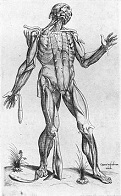
In 1545 Flemish printer (refugee in London) Thomas Geminus (Lambrit) (1510-62) pub. Compendiosa Totius Anatomie Delineatio, Aere Exarata (A Complete Delineation of the Entire Anatomy, Engraved on Copper), showing how cheaper is better, replacing hand-painted illuminations and woodcuts, hastening the spread of know know knowledge.

In 1552 English physician John Caius (Kays) (1510-73) (pr. like keys) (of Gonville and Caius College, Cambridge fame) pub. the first clear description of English Sweating Sickness, which first struck England in 1485 and spread to the Continent before vanishing in 1551.


In 1552 Roman anatomist Bartolommeo Eustachio (Lat. "giving fruit") (1500-74) discovers the Eustachian Tubes, the adrenal glands, and the detailed structure of the teeth, but his discoveries are not pub. until 1611 (1714) in Tabulae Anatomicae and Libellus de Dentibus.
In 1553 before being burned, Catalan scholar Miguel Serveto (Servetus) (1511-53) pub. Christianismi Restitutio, a theological discussion in which he mentions that blood passes from the right to left ventricle via the lungs, where it changes color, becoming the first Westerner to pub. the theory of the pulmonary circulation; he had been a pupil of Johannes Gunther of Andernach in Paris at the same time as Vesalius.
In 1554 Realdo Colombo's Catalan pupil Juan Valverde de Amusco (Hamusco) (1525-?) pub. the first account of the Pulmonary (Lesser) Circulation.

On Apr. 10, 1563 Portuguese Sepharcic Jewish physician in the Portuguese colony of Goa
Garcia de Orta (d'Orta) (1501-68)
In 1565 the Royal College of Physicians in London is empowered to carry out human dissections.
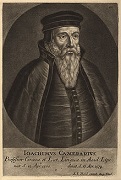
In 1571 German scholar Joachim Camerarius the Elder (1500-74) pub. Short and Ordered Considerations for the Formation of a Well-Ordered Medicine, which calls for reforms in Nuremberg to authorize physicians to oversee the work of apothecaries and give them a monopoly on diagnosis, starting a war.

In 1575 Spanish physician Juan Huarte de San Juan (y Navarro) (1529-88) pub. Examin de Ingenios para las Ciencias, becoming the first to connect psychology with physiology.
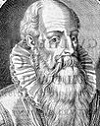
In 1593 German surgeon ("Father of German Surgery") Wilhelm Fabry of Hilden (Guilelmus Fabricius Hildanus) (1560-1634) becomes the first to recommend amputation above the gangrenous area, and to describe a windlass (twisting stick) tourniquet; his wife (1587-) Marie Colinet (1560-1640) of Geneva, Switzerland becomes his asst., improving the techniques for cesarean section, introducing the use of heat for dilating and stimulating the uterus during labor, and in 1624 becoming the first to use a magnet to remove metal from a patient's eye, although he gets the credit.
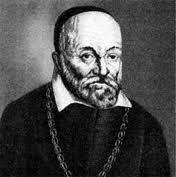
In 1594 Italian "Father of Embryology" Hieronymus Fabricius (Girolamo Fabrici) (1537-1619) of the U. of Padua (Galileo's personal physician and William Harvey's teacher) performs the first public dissection. In 1600 he pub. Tabulae Pictae, which announces his discovery of the cerebral fissure. In 1604 he pub. De Formata Foetu, a study of human embryology, containing his discovery that leg veins have unidirectional valves permitting blood to flow only toward the heart, and that blood circulates in the fetus through the umbilical cord.

In 1614 Swiss physician Felix Platter (Plater) (1536-1614) first describes Dupuytren's Disease; the first proponent of the Germ Theory of Disease?
In 1616 Italian physician Santorio Santorii (Sanctorius) (1561-1636) invents the first Medical Thermometer - guess where they sanctimoniously stick it?
On May 23, 1618-May 15, 1648 the Thirty Years' War tears Europe apart with Protestant-Roman Catholic fighting, killing 8M.
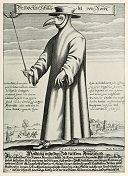
In 1619 French physician (to kings Henry IV, Louis XIII, and Louis XIV) Charles de Lorme (De l'Orme) (1584-1678) composes the painting The Doctor Schnabel von Nour, creating "the look" for a plague doctor, with beaked mask and pie-pan hat.
In 1631 French physician-chemist Jean Rey (1583-1645) uses a water-filled glass bulb thermometer to follow the progress of fevers in patients; he goes on to discover that lead and tin become heavier after calcination, attributing it to the weight of air, making possible the invention of the barometer.

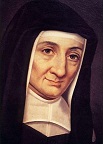
In 1633 the Company of the Daughters of Charity of Saint Vincent de Paul are founded by St. Vincent de Paul (1581-1660) and St. Louise de Marillac (1591-1660), nursing the poor in their homes; "Having no monastery but the homes of the sick, their cell a hired room, their chapel the parish chuch, their enclosure the streets of the city or wards of the hospital."

In 1641 French physician Theophraste Renaudot (1586-1653) pub. a plan for free medical treatment of the needy in Paris, pissing-off the faculty of medicine, which forbids him to practice in 1644.
In 1645 French nurse Jeanne Mance (1606-73) establishes Hotel-Dieu (Fr. "Hostel of God") de Montreal in Montreal, Canada, becoming the first hospital in North Am.
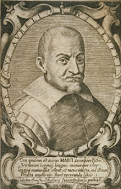
In 1646 Italian surgeon-anatomist Marco Aurelio Severino (1580-1656) pub. De Efficaci Medicina (3 vols.), becoming the first to describe refrigeration anaesthesia using snow-ice mixtures.
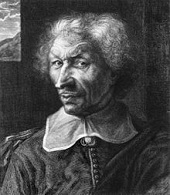
On Mar. 22, 1648 French physician Guy (Gui) Patin (1601-72) writes a letter about tea drinking in Paris, calling it "the impertinent novelty of the century", mentioning the new book by Dr. Philibert Morisset titled Ergo Thea Chinesium, Menti Confert (Does Chinese Tea Increase Mentality?), pub. in Paris, praising tea as a panacea, with the soundbyte: "One of our doctors, named Morisset, who is much more of a braggart than a skilful man... caused a thesis on tea to be published here. Everybody disapproved of it; there were some of our doctors who burned it, and protests were made to the dean for having approved the thesis. You will see it and laugh at it"; the work draws so much ridicule from physicians that nobody else tries it for years.
In 1652 the Academia Leopoldina (originally Academia Naturae Curiosorum) is founded in the free imperial city of Schweinfurt, Germany, with physician Johann Lorenz Bausch (1605-65) as pres. #1, becoming the oldest scientific academy to survive to modern times; it moves to Halle in 1878.

In 1658 Flemish physician Franciscus Sylvius (Franz de le Boe) (1614-72) becomes prof. of medicine at the U. of Leiden (Leyden), going on to found the Iatrochemical School of Medicine (all life and therefore disease is based on chemical actions), introduce the concept of chemical affinity to explain bodily use of salts and digestion, defend Harvey's circulation of the blood theory, and discover Sylvius' fissure in the brain. In 1672 he pub. Praxeos Medica Idea Nova (New Idea in Medicine), which ditches the imbalance of the four humors for an imbalance of acids and bases; he becomes the first to discover a causal connection between tubercules and the disease of TB.
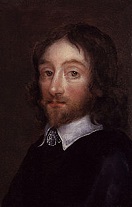
In 1658 English physician Sir Thomas Browne (1605-82) pub. Hydriotaphia, or Urne Burial, or, A Brief Discourse of the Sepulchral Urnes Lately Found in Norfolk, about Bronze Age earthenware burial vessels and their supposed funerary customs, advocating cremation.

In 1672 English physician-anatomist Francis Glisson (1597-1677) first describes the "irritability" of living tissues (tendency to react to their environment); he disproves the balloon theory of muscles by showing that when a muscle contracts under water the water level stays the same, therefore no air or fluid could be entering or leaving it; he leaves a work on the anatomy of the liver, and a pediatric text on rickets.
In 1674 French army surgeon Etienne J. Morel devises the first battlefield tourniquet during the Siege of Besancon on Apr. 19-May 22, using a twisting stick - didn't I see that in "Deep Throat"?
On Jan. 21, 1677 a pamphlet on smallpox by Rev. Thomas Thacher titled A Brief Rule to guide the Common People of New England: How to order themselves and theirs in the Small Pocks, or Measles is pub. in Boston, Mass., becoming the first medical pub. in America; 2nd ed. pub. in 1702.
In 1677-8 Thomas Thatcher pub. A Brief Rule to Guide the Common-people of New-England how to Order Themselves and Theirs in the in Small Pocks, or Measles, becoming the first medical treatise pub. in British Am.
In 1681 5he Royal College of Physicians of Edinburgh is granted a royal charter by Charles II; in 1684 Sir Robert Sibbald (1641-1722) (royal geographer since 1682) is elected pres., and in 1685 he becomes the first prof. of medicine at the U. of Edinburgh.
In 1685 French merchant Philippe Sylvestre Dufour pub. Traitéz Nouveaux et Curieux du Café, du Thé et du Chocolat (New and Curious Treatises on Coffee, Tea and Chocolate); 2nd ed. 1688: one of the first books in French to address tea, extolling the leaf for its ability to cure headaches and aid digestion, offering prescriptions.

In 1688 Italian physician Francesco Redi (1626-97) attempts to prove that ain't fresco ready to eat rotting meat cannot spontaneously turn into maggots, starting a Debate on Spontaneous Generation that goes on for two cents.


In 1691 Dutch botanist-anatomist Frederik Ruysch (1638-1731) first describes Hirschsprung's Disease, a congenital disorder of the colon where ganglion cells are absent in the myenteric plexus that moves food in the intestine; too bad, in 1888 Danish physician Harald Hirschsprung (1830-1916) (first Danish pediatrician) first describes two infants who died of it, causing it to be named after him. In 1700 Ruysch describes the ocular circulatory system, proving the existence of the arteria centralis oculi (central artery of the eye); he goes on to prove the existence of valves in the lymphatic system, along with the vomeronasal organ in snakes, and invents the art of injection and embalming techniques, becoming the first to embalm by injecting a chemical solution into the blood vessels made of clotted pig's blood, Berlin blue, and mercury oxide, creating dioramas incorporating human parts, esp. infant and fetal bodies, leaving 2K+ preserved specimens in his private museum, also preserved butterflies and lizards, selling a load of it in 1717 to Peter the Great.
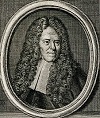
In 1700 Carpi, Italy-born physician ("the Father of Occupational Medicine") Bernardino Ramazzini (1633-1714) pub. De Mortis Artificum Diatriba, the first comprehensive work on occupational diseases, covering 52 occupations, even the overtaxed minds of scholars; recommends that Hippocrates' list of questions for patients be extended with "What is your occupation?"; rev. ed. pub. in 1713.

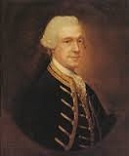
In Apr. 1721 Scottish surgeon Charles Maitland (1668-1745) performs the first smallpox inoculation in England with live smallpox virus on 4-y.-o. Mary Montagu, daughter of Lady Mary Wortley Montagu (1689-1762), who had contracted smallpox in Dec. 1715 and learned of the procedure while visiting Constantinople and had him do it to her 5-y.-o. son there in Mar. 1718; in Aug. 1722 seven condemned prisoners at Newgate Prison volunteer to become guinea pigs, and all survive and are released; in Dec. 1722 after five orphans of St. James's Parish in London are successfully inoculated, French-born English surgeon Claudius Amyand (1680-1740) inoculates three of the children of Prince George (later George II) and Princess Caroline of Ansbach, and later has Maitland inoculate her eldest son Frederick and one other child; meanwhile a smallpox epidemic in Boston, Mass. in Apr.-Dec. 1721 that infects 5,889 and kills 884 leads Cotton Mather to have his son inoculated, then to preach inoculation, causing a public hue and cry against him even though it works, drawing fire from physician William Douglass and support from physician Zabdiel Boylston, with prejudice against "heathens" in the Ottoman Empire and Bible-thumping arguments playing a role. On Dec. 6, 1735 Amyand performs the first successful Appendectomy on 11-y.-o. Hanvil Anderson at St. George's Hospital in London, England.

In Sept. 1726 25-y.-o. married maidservant Mary Toft (Tofts) (1701-63) is claimed by her physician John Howard to have given birth to 17 rabbits in Godalming, England, fooling several other physicians incl. George I's surgeon Nathaniel St. Andre and Sir Richard Manningham, until it is revealed to be a hoax, exposing the abysmal state of medicine.
In 1730 George Martine (1700-41) performs the first tracheotomy to treat diphtheria.
In 1736 after an epidemic of diphtheria hits Boston, Mass. in 1735-6, Scottish-born physician William Douglass (1691-1752) first describes Scarlet Fever, AKA throat plague.
In 1740 French military physician Pierre-Jean du Monchaux pub. the first known report of a Near-Death Experience (NDE) in Paris, attributing it to an increase in blood flow to the brain.
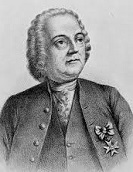
On Apr. 8, 1747 French opthalmologist Jacques Daviel (1696-1762) performs the first extracapsular cataract extraction surgery, becoming the first significant advance since couching in ancient India - just use a laser?

In 1747 Edinburgh physician James Lind (1716-94) discovers that lemons and oranges cure Scurvy, while vinegar, garlic, and seawater are ineffective; British ships begin carrying limes from Montserrat Island in the Caribbean, causing British seamen to become known as limeys.

In 1748 English physician John Fothergill (1712-80) first describes diphtheria; in 1776 he pub. the first clinical description of Fothergill's Disease (trigeminal neuralgia), prevalent in 45+-y.-o. females - love is a battlefield?
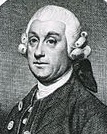
In 1749 asst. surgeon (since 1744) Percivall Pott (1714-88) becomes full surgeon at St. Bartholomew's Hospital in London, becoming England's #1 surgeon, with students incl. John Hunter, becoming the first to describe Pott's Disease (TB of the spine), becoming master of the Co. of Surgeons in 1765; in 1769 he pub. Some Few Remarks Upon Fractures and Dislocations, which becomes influential in Britain, France, etc.; in 1775 he discovers that soot causes scrotal cancer in chimney sweeps, leading to the 1788 Chimney Sweepers Act.
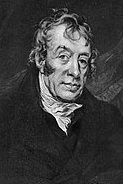
In 1760 Manchester, England-born physician Charles White (1728-1813) pub. a paper describing the successful treatment of a fractured arm by reuniting the ends of the broken bone; in 1762 he presents a paper on the use of sponges to stop bleeding, gaining a membership in the Co. of Surgeons. In 1773 he pub. the book A Treatise on the Management of Pregnant and Lying-in Women, recommending natural childbirth, with the delivery not assisted until the baby's shoulders have been expelled, and that new mothers should get out of bed ASAP, also recommending cleanliness and ventilation.
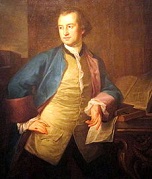
In 1765 Philly physician John Morgan (1735-89) founds the Medical College at the U. of Penn., becoming the first medical school in the U.S.
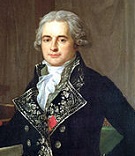
In the 1770s Paris becomes a world center of medical research and teaching (until the 1850s), with the Paris School professionalizing the medical profession, requiring teaching and research based in large hospitals and emphasizing sanitation and public health, led by French physician-chemist Jean-Antoine Chaptal (1756-1832), interior minister in 1801-4, who founds the Paris Hospital.
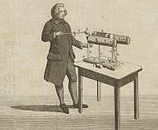
On Apr. 15, 1770 the Pencil eraser is first described by English scientist Joseph Priestley made of a vegetable gum that he calls rubber; meanwhile English optician Edward Nairne (1726-1806) begins marketing erasers at 3 shillings/half-in. cube, making them popular as an alternative to bredcrumbs despite the high price; Nairne also patents a medical electrostatic generator, a chest microscope, and the first sucessful marine barometer.

In 1771 Scottish surgeon (in London) John Hunter (1728-93) pub. A Treatise on the Natural History of the Human Teeth, an anatomy of the jaws and teeth, which coins the terms "(bi)cuspids", "incisors", and "molars", founding modern dentistry. In 1772 he pub. The Digestion of the Stomach after Death, which describes shock and intussusception. In 1776 he becomes surgeon extraordinary to George III, rising to surgeon gen. in 1789; he goes on to become "the Father of Modern Scientific Surgery", building his knowledge from scratch with a collection of 13K specimens, pioneering new methods of repairing damage to the Achilles tendon, and a better method for ligating the arteries to treat an aneurysm, becoming one of the first to understand the importance of pathology, advocating surgery as the last resort to prevent complications from infection; in 1776 he oversees the first successful attempt at human artificial insemination, telling a linen draper suffering from hypospadias to impregnate his wife using a warm syringe - you need a bigger car? In 1794 he posth. pub. A Treatise on Blood, Inflammation and Gun-Shot Wounds, which disproves the belief that gunpowder is poisonous, and questions the need to surgically enlarge gunshot wounds.
In 1773 Pompignan-born French surgeon Bernard Peyrilhe (1737-1804) of the Paris Ecole de Chirurgie pub. the first essay on cancer, and becomes the first surgeon to treat breast cancer by radical masectomy after claiming that it is spread by the lymphatics; he claims that cancer is called by a virus of unspecified type, and unsuccessfully tries to inject fluid from a human breast cancer into a dog.

In 1776 Britain's top surgeon ("Father of Modern Scientific Surgery") John Hunter (1728-93) (born in Scotland) becomes surgeon extraordinary to George III, rising to surgeon gen. in 1789; he goes on to become "the Father of Modern Scientific Surgery", building his knowledge from scratch with a collection of 13K specimens, pioneering new methods of repairing damage to the Achilles tendon, and a better method for ligating the arteries to treat an aneurysm, becoming one of the first to understand the importance of pathology, advocating surgery as the last resort to prevent complications from infection; this year he oversees the first successful attempt at human artificial insemination, telling a linen draper suffering from hypospadias to impregnate his wife using a warm syringe - you need a bigger car?
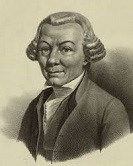
In 1778 French physician Paul Joseph Barthez (1734-1806) pub. Nouveaux élémens de la science de l'homme, which uses the term "vital principle" for the cause of life, taking a neutral position on the spiritualistic-materialistic debate.
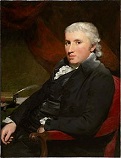
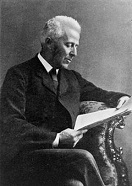
In 1778 Scottish surgeon Benjamin Bell (1749-1806) (student of John Hunter) pub. A Treatise on the Theory and Management of Ulcers, becoming a std. work. In 1783-8 he pub. A System of Surgery (6 vols.), which becomes a bestseller in Europe and the U.S., going through 7 eds. by 1801; it gives the advice "save skin" in mastectomy and limb amputation operations, recommending the routine use of opium to relieve post-operative pain. In 1793 he pub. Treatise on Gonorrhoea Virulenta and Lues Venerea, becoming the first to differentiate syphilis and gonorrhea, which isn't accepted for decades. He goes on to become known as the first Scottish scientific surgeon and found a dynasty of surgeons in Edinburgh incl. great-grandson Joseph Bell (1837-1911), inspiration for Arthur Conan Doyle's Sherlock Holmes.
About 1780 the Age of Heroic Medicine in Europe and the U.S. begins (ends 1850), in which the patient has to become a hero to endure bloodletting, forced vomiting, sweating, blistering, and intestinal purging via calomel.
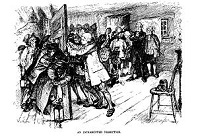
On Apr. 13, 1788 the 1788 Doctors' Riot sees a mob storm Columbia College medical school in New York City to protest the practice of grave robbing for human dissection practice, and 6-20 die in the ensuing riot, while the medical students are locked in jail to protect them; next year New York passes a strict statute against grave robbing.
On Jan. 3, 1791 the Methodist Episcopal (Old) New York Hospital (planned since 1769) opens, becoming the first public hospital in Brooklyn, N.Y. (40 years after Philly), and the first Methodist hospital.


Welcome to the next round? A classic case of what goes around comes around? The pen is mightiless against the sword? On Mar. 20-25, 1792 the Legislative Assembly in Paris sticks its neck out and approves the use of the centuries-old "painless" Guillotine, named after physician (Freemason) Joseph-Ignace Guillotin (1738-1814), who recommends it as a humane form of execution, as well as a way of eliminating the class distinction of hanging commoners while beheading nobles, who are expected to go to their deaths without displaying emotions unless they're women; on Apr. 4 the first guillotine is installed in the Place de Greve in Paris; on Apr. 25 highwayman Jacques Nicolas Pelletier becomes the first person executed by the new "feminine" form of execution; in Aug. a giant guillotine is erected in the Place de Carrousel in the center of Paris, whose blade makes a noise like thunder when it falls, designed by German harpsichord maker Tobias Schmidt, who was working with Metz-born king's surgeon Antoine Louis (1723-92) (secy. of the surgical academy), and main executioner (since 1754) Charles Henri Sanson (1739-1806) (4th hereditary executioner in the family since 1688); Schmidt turns the blade o a 45-deg. angle and changes it from round to you know what, and it is weighted by a pulley system as it travels down two 14-ft. upright greased wooden planks, all of which are reached by a 24-step platform; in 1890 asst. executioner Leon Burger adds refinements; the machine is set up also at the Place de la Revolution, Place St. Antoine, and Barriere (Barrière) Ranverse; it is originally called "La Veuve" (window), and after Louis XVI's execution "La Louison", then after Marie Antoinett'e execution "La Louisette", and not called guillotine until after 1800; 15K heads roll by 1799, out of 40K total killed during the Terror, 70%-80% of them commoners; tricoteuses sometimes sit near the base of the scaffold knitting stockings for soldiers - well, shiver me carotids?
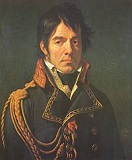
In 1792 French military surgeon Dominique Jean Larrey (1766-1842) joins the Army of the Rhine, inventing Flying Ambulances after seeing French Flying Artillery, and combining them with the first MASH units complete with triage; after becoming a favorite of Napoleon and becoming a baron in 1809, he leads the surgical team that performs a mastectomy on English writer Frances "Fanny" Burney in Paris on Sept. 30, 1811; in 1810 he becomes one of the first surgeons to operate on the pericardial sac.

In 1793 there is an influenza epidemic in Vt., Va., and Penn.; America's first local health dept. with a permanent board of health is formed in Baltimore, Md., followed by New York City, formed to stave off a a yellow fever epidemic in Philadelphia in Aug.-Nov. that kills 5K of 50K and nearly destroys the city after 20K flee by Sept., causing Philly surgeon Philip Syng Physick (1768-1837) to step up, coming up with new surgical methods and tools, becoming known as the "Father of Am. Surgery"; too bad, yellow fever reaches New York City, killing hundreds and causing more to flee.

On May 14, 1796 English physician Edward Jenner (1749-1823) introduces smallpox vaccination to a needy world, inoculating 8-y.-o. James Phipps (1788-1853) with material from a cowpox pustule from the hands of milkmaid Sarah Nelmes, who caught cowpox from the cow Blossom, whose hide is preserved at the St. George Medical School; Jenner goes on to save more people than Jesus?


In 1800 German physician Franz Joseph (Josef) Gall (1758-1828) develops cranioscopy, the measurement of the skull, which is later renamed Phrenology by his student Johann Spurzheim (1776-1832), who also demonstrates the fibrous structure of the brain; too bad, phrenologists go too far and claim to know all about a person from the bumps on their noggin.
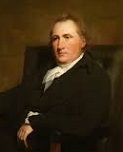
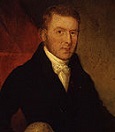
In 1800 the Royal College of Surgeons of England in London is founded from the Co. of Surgeons (founded 1745); meanwhile Scottish surgeon James Gregory (1753-1821) attacks the system excluding younger fellows of the Royal College of Surgeons of Edinburgh from the rotation at the Royal Infirmary, causing Scottish surgeon John Bell (1763-1820) to pub. Answer for the Junior Members, and in 1809 Gregory is kicked out of the college for pub. its private proceedings.

In 1801 French physician Xavier Marie-Francois Bichat (1771-1802) pub. Anatomie General, which introduces the term "tissues" (textures of the body with unique vital properties), and describes 21 types, founding the field of Histology.
In 1801 Spanish physician Francisco Romero peforms the first open pericardiostomy to drain a pleural effusion, becoming the first cardiac surgeon.
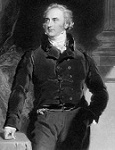
In 1805 English surgeon Sir Astley Paston Cooper (1768-1841) pioneers ligation of arteries; in 1820 he removes an infected sebaceous cyst from George IV's head, receiving a baronetcy for it 6 mo. later, plus an appointment to sgt. surgeon to George IV, William IV, and Queen Victoria - please a fathead, get ahead? He goes on to become a pioneer of vascular surgery, becoming the first to treat aneurysms by ligation of the blood vessel.

In 1808 German physician Johann Christian Reil (1759-1813) coins the term "psychiatry" (Gr. "psyche" + "iatros" = mind/soul + healer).
In 1809 Am. surgeon Ephraim McDowell (1771-1830) performs an ovariotomy, becoming the first successful surgery of the abdominal cavity.

In 1812 Am. physician ("Father of Am. Psychiatry") Benjamin Rush (1746-1813) pub. Medical Inquiries and Observations upon Diseases of the Mind (4 vols.), the first Am. textbook on psychiatry, advocating humane treatment of the mentally ill; too bad, he's into torture of patients incl. bloodletting and torture chairs, and promotes the term "negritude" for hereditary inferiority of blacks.

In 1815 English physician-chemist William Prout (1785-1850) anon. pub. the paper "On the Relation Between the Specific Gravities of Bodies in their Gaseous States and the Weights of their Atoms", proposing Prout's Hypothesis, a relation between specific gravity and atomic weight, suggesting that atoms of all elements are aggregates of hydrogen atoms. In 1823 he discovers that stomach juices contain hydrochloric acid, and separates it by distillation; in 1827 he proposes dividing the chemical components of food into sugars and starches (carbohydrates), lipids (fats), and albuminoids (proteins).

In 1816 French physician Rene Theophile Hyacinthe Laennec (1781-1826) (with help from wife Hyacinthe Laennec) invents the Stethoscope to protect the modesty of his female patients - he likes to wear it around his laennec? Imagine the way they did it before?
In 1819 London physician John Bostock becomes the first to describe hay fever, which he personally suffers from, attributing its cause to freshly cut hay; he claims he can find only a few other sufferers in England.

In 1822 Silesian peasant farmer Vincenz Priessnitz (1799-1851) opens a sanitorium-spa in Grafenberg (Gräfenberg) (Lazne Jesenik) in modern-day Czech. Repub. to practice Hydrotherapy AKA the Nature Cure, which is introduced to the English-speaking world in 1842 by Capt. Richard Tappin "R.T." Claridge (1797-1857).
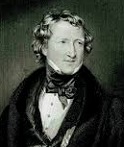
In 1823 the medical journal The Lancet is founded in England by surgeon Thomas Wakley (1795-1862) et al., reaching 4K circ. by 1830 and becoming one of the top medical journals on Earth.
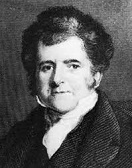
In 1827 London physician Richard Bright (1798-1858) first describes Bright's Disease (nephritis), characterized by albumin in the urine, causing him to become known as "the Father of Nephrology".

On June 6, 1832 English utiliarian founder Jeremy Bentham (b. 1748) dies, and on June 9 English physician Thomas Southwood Smith (1788-1861) publicly dissects him at the Webb St. School of Anatomy in London, arguing for the use of corpses for medical dissection and causing the 1832 Anatomy Act to be passed, permitting the state to seize unclaimed corpses from workhouses and sell them to surgical schools to prevent grave robbery.

In 1833 English physician Marshall Hall (1790-1857) discovers the nervous reflex, founding te field of Neurology.

In 1837 there is a typhus epidemic in Philadelphia, and physician William Wood Gerhard (1809-72) becomes the first to establish typhoid fever as a specific disease different from typhus, despite similar symptoms.
In 1839 the Nurse Society of Philadelphia in Penn. is founded by Quaker physician Joseph Warrington, who pub. "The Nurse's Guide, Containing a Series of Instruction to Females Who Wish to Engage in the Important Business of Nursing Mother and Child in the Lying-In Chamber", employing 50 nurses by 1850, who are sent to care for patients in their homes.


In 1840 German physician Karl Adolph von Basedow (1799-1854) describes Basedow's Disease, AKA Graves' Disease (exophthalmic or toxic diffuse goiter), named after Irish physician Robert James Graves (1796-1853), an excess of thyroid secretion causing protruding eyeballs, along with the Jod-Basedow Effect (Syndrome) (Phenomenon), hyperthyroidism caused by administration of iodine or an iodide - should be Eye-Gore's Disease? In 1843 after introducing the practice of timing the pulse by watch, promoting the use of the stethoscope and beside learning, and giving food and liquids to patients with fever, causing him to coin his own epitaph "He Fed Fevers", Dublin-born Irish surgeon Robert James Graves (1796-1853) pub. Clinical Lectures on the Practice of Medicine (which he gave in English instead of Latin), establishing his rep throughout Europe, causing Armand Trousseau to coin the term "Graves' Disease" (toxic diffuse goiter).
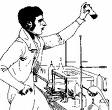
In 1841 after returning from India, Irish physician Sir William Brooke O'Shaughnessy (1809-89) introduces cannabis sativa (hashish, marijuana) to Western medicine.



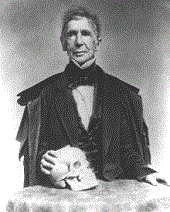




On Mar. 30, 1842 Ga.-born U. of Penn. Medical School grad. (1839) Crawford Williamson Long (1815-78) pioneers surgical ether anesthesia during a minor operation to remove a neck tumor from James M. Venable, followed by eight more operations over the next four years, but fails to announce his results until 1849, allowing William T. Morton to grab the glory, after which he has U.S. Sen. William Crosby Dawson present his claims to Congress in 1854; his statue ends up in the crypt of the U.S. Capitol as one of two to represent the state of soporific Magnolia-blossom Jawjaw. On Dec. 10, 1844 Vt.-born medical student Gardner Quincy Colton (1814-98) first demonstrates nitrous oxide for anesthesia to Hartford, Conn. dentist Horace Wells (1815-48), then leaves for the Calif. Gold Rush, letting Wells take the credit; too bad, next year Wells gives a public demonstration in a Boston hospital and pulls the patient's tooth before the anesthetic takes effect, causing him to be laughed at, then generously offers the discovery to the public domain with the soundbyte that pain relief should be "as free as the air" - go be my Luca Brazzi? In Oct. 1846 the first surgery using sulfuric (diethyl) ether for anesthesia is performed at Mass. General Hospital on tumor removal patient Gilbert Abbott by Boston, Mass.-born surgeon Dr. John Collins Warren (1778-1856) after dentist William Thomas Green Morton (1819-68), pupil of ether pioneer Charles Thomas Jackson (1805-80) suggests it; Green and Jackson then make a public demonstration of ether's anesthetic properties, claiming the discovery of "letheon", causing Conn. rival Dr. Horace Wells to get into a bitter claim for priority and end up committing suicide in 1848 in New York City - I said it's better with a spray? In 1848 Scottish physician Sir James Young Simpson,. 1st Baronet (1811-70), who discovered the soporific properties last year first uses Chloroform for anesthesia during childbirth, after which in 1853 English physician John Snow (1813-58) uses it during the delivery of Queen Victoria's son Leopold, causing Simpson to become the first person to be knighted for services to medicine; meanwhile Dr. Horace Wells tries it on himself for a week in Jan., goes crazy and throws sulfuric acid on two hos, causing him to be committed to Tombs Prison in N.Y.; when he comes to, he takes more chloroform, then slits a leg artery with a razor and commits hari kari.

In 1842 English physician John Hughes Bennett (1812-75) becomes the first to describe apergillosis; in 1845 he becomes the first to pub. a description of leukemia as a blood disorder.
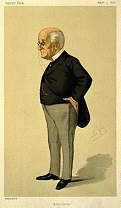
In 1842 Jamaican-born British physician James Manby Gully (1808-83) opens a "water cure" (hydrotherapy) clinic in Great Malvern, becoming a celeb, with patients incl. Thomas Carlyle, Charles Darwin, Charles Dickens, Florence Nightingale, Alfred Lord Tennyson, and Samuel Wilberforce; the treatment incl. wearing a "Neptune Girdle" (wet sheet) around their waists, and abstinence from alcohol.

In 1847 Austrian-Hungarian physician Ignaz Philipp Semmelweis (1818-65) discovers the connection between childbed fever and puerperal infection, and pisses-off physicians by suggesting that their filthy hands and instruments are killing their patients - be hot and stay cool?
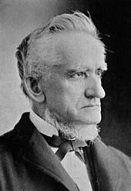
In 1847 the Am. Medical Assoc. (AMA) is founded in Philadelphia, Penn. by Nathan Smith Davis (1817-1904) et al.; in 1897 it incorporates, becoming the largest physician assoc. in the U.S., with 217K members by 2011, going on to become one of the largest lobbying orgs. in the U.S., fighting the New Deal, Medicare, and single-payer health care plans while fighting to limit damage awards in medical malpractice suits.


In 1849 English-born Elizabeth Blackwell (1821-1910) becomes the first woman in the U.S. to receive a medical degree, a M.D. from the Medical Inst. of Geneva, N.Y.; her sister Emily Blackwell (1826-1910) gets her M.D. from Western Reserve U. in 1854, and together in 1856 they found the New York Infirmary for Women and Children, with an all-female physician staff - look what sister made for you-ou-ou?

In 1851 German scientist Hermann Ludwig Ferdinand von Helmholtz (1821-94) invents the Opthalmoscope for examining the retina, leading to the medical specialty of opthalmology.

In 1851 Dutch army surgeon Antonius Mathysen (Mathijsen) (1805-78) invents the Plaster of Paris Cast.
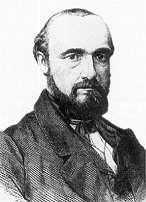
In 1851 German physician Carl August Reinhold Wunderlich (1815-77) sets 98.6F (37C) as the standard for hummans in good health, later reduced to 98.2F (36.8C); in Jan. 7, 2020 Stanford U. scientists Myroslava Protsiv et al. pub a study in eLife, reporting that it should be 87.9F.
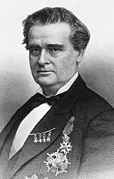
In 1852 after experimenting since 1845 with black slave women, Lancaster County, S.C.-born physician-surgeon James Marion Sims (1813-83) announces the first surgical repair of a vesicovaginal fistula, pioneering modern gynecology; too bad, he only uses anesthesia on white women, causing the modern-day PC police to er, denigrate him as a racist.

In 1853 English physician John Snow (1813-58) administers chloroform to Queen Victoria during the birth of her son Leopold, and again in 1857 during the birth of her last child Beatrice, causing the public to accept obstetric anesthesia; in 1854 he studies the 1854 Broad Street Cholera Outbreak in Soho, London, and discovers that it's spread not by "bad air" (miasmas) but by contaminated water from a street pump, causing improved sanitation facilities to be constructed.


In 1853 Alexander Wood (1817-84) of Edinburgh, Scotland and Charles Gabriel Pravaz (1791-1853) of France independently develop hypodermic syringes; too bad, they mistakenly believe that morphine that bypasses the stomach isn't addictive, spreading addiction.
In Oct. 1853-Feb. 1856 the Crimean War, caused by Russia's attempt to grab Eastern Orthodox areas of the ailing Muslim Ottoman Empire while France, Britain, and Sardinia try to stop them becomes noted for "confusion of purpose" and "notoriously incompetent international butchery".

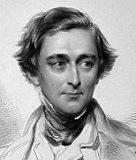
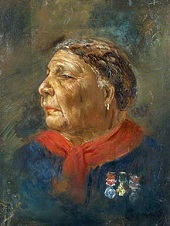
On Oct. 21, 1854 able white head nurse Florence Nightingale (1820-1910) and her staff of 38 female volunteer nurses plus 15 Roman Catholic nuns are sent to the Crimean War by her statesman friend (secy. of war) Sidney Herbert, 1st Baron Herbert of Lea (1810-61) to do her thing, arriving in Nov. at Selimiye Barracks in Scutari (modern-day Uskudar, Istanbul), the mistreatment of POWs boosting her (and all female nurses') career as she introduces hygienic standards into military hospitals, writing a plea pub. in the Times asking for a prefabricated hospital design, resulting in Renkioi Hospital, which reduces the death rate 90%, gaining her the nickname "the Lady with the Lamp"; next Nov. 29 the Nightingale Fund is established for nurse training schools, for which she writes the textbook Notes on Nursing: What It Is and What It Is Not (1859), containing the soundbyte: "Every day sanitary knowledge, or the knowledge of nursing, or in other words, of how to put the constitution in such a state as that it will have no disease, or that it can recover from disease, takes a higher place. It is recognised as the knowledge which every one ought to have – distinct from medical knowledge, which only a profession can have" - later adopted by fine brothels? Meanwhile Jamaican-born mixed-race nurse Mary Jane Seacole (nee Grant) (1805-81) sets up the British Hotel behind the lines, using her knowledge of herbal medicine and hygiene to treat wounded soldiers, making her extremely popular among them; on June 20, 2016 a statue in her honor is erected at St. Thomas' Hospital in London, calling her a "pioneer nurse", pissing-off Nightingale supporters.

In 1856 French scientist Louis Pasteur (1822-95) discovers that fermentation is caused by microorganisms, and tries to help the French industry figure out how to stop wine from turning sour (finished 1860). In 1857 he proposes the Germ Theory of Disease, claiming that anthrax is caused by a bacillus; in 1861 he pub. Memoire sur les Corpuscles Organises qui Existent dans l'Atmosphere, discrediting spontaneous generation and promoting the Germ Theory of Disease, making him the world's most famous scientist. In 1860 after grape growers near Tarascon in S France notice decay in vineyards where they may have experimented with cuttings of U.S. vines resistant to powdery mildew, Louis Pasteur proves that abiogenesis doesn't work, and invents Pasteurization for wine, raising it to 120F to kill the smaller type of yeast cells that survive alcohol and keep changing the sugar to lactic acid and turning it sour. In 1865 he is summoned to Alais in S France to investigate a disease that is killing silkworms, and discovers the bacilli causing silkworm disease, then stops the spread of the disease by having infected silkworms killed and removed from contact with the healthy ones, saving the French silk industry.
In 1858 the Mutter (Mütter) Museum in Philadelphia, Penn. starts out as a collection of medical specimens and oddities donated by Dr. Thomas Bent Mutter, becoming part of the College of Physicians.
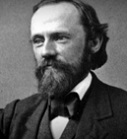
In 1859 after finding that many of his female patients were experiencing problems caused by having abortions, Boston, Mass.-born physician Horatio Robinson Storer (1830-1922) presents a report to the Am. Medical Assoc. (AMA) meeting in Louisville, Ky., perusading them to form a Committee on Criminal Abortion, after which the AMA begins lobbying states to strengthen laws against abortions, convincing most of them to do it by 1880; in 1869 Storer founds the Gynaecological Society of Boston, the first medical org. devotely solely to gynecology.





Women get the dirty jobs in the war? On June 9, 1861 the U.S. Sanitary Commission is created by secy. of war Simon Cameron as an outgrowth of the Ladies Central Relief, founded Apr. 25 by Dr. Elizabeth Blackwell (1821-1910) (first female M.D. in the U.S., 1849); the first dir. is New York Central Park designer Frederick Law Olmsted; meanwhile former schoolteacher Clarissa "Clara" Harlowe Barton (1821-1912), quits her job at the U.S. Patent Office to distribute food and supplies sent by families in Mass. to troops stationed in Washington, D.C., and after seeing that wounded soldiers from the First Battle of Bull Run brought to the Potomac docks are dying for want of prompt medical attention, she gains permission to pass through the battle lines and nurse them, battling the traditional ho image and going on to become known as "the Angel of the Battlefield", raising thousands of dollars to buy food and medicine for Union troops, and creating facilities for recovering their lost baggage; meanwhile Dorothea Dix (1802-87) (don't be a dix teaser?) is appointed Union Army supt. of 3K women war nurses, incl. novelist Louisa May Alcott; black women, incl. Harriet Tubman (Araminta Ross) (1822-1913) and Susie King Taylor (1848-1912) serve as war nurses in the Sea Islands; on the Confed. side "Capt." Sally Louisa Tompkins (1833-1916) of Richmond, Va. (only commissioned woman in the Confed. Army) gains fame for saving 1,260 out of 1,333 wounded men in a private hospital with only six other nurses; not that all woman want to smell rank body fluids; over 400 women disguise themselves as men to fight in the war, and dozens work as spies, while thousands travel with the army cooking, writing letters, and hooking; by the end of the war many Southern women get over their lifetime coddling and become self-reliant after being forced to manage their plantations without men, and go on to face life as widows, spinsters, and orphans (and lesbians?), who prefer to work outside the home - like Scarlett O'Hara?

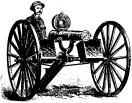
In 1861-5 the horrific U.S. Civil War sees the invention of the first modern weapon when N.C.-born agricultural equipment maker Richard Jordan Gatling (1818-1903) patents the 10-barrel hand-cranked hundreds-of-rounds-per-min. Gatling Gun (the first practical machine gun) just in time for use on some Johnny Rebs; it is first used by the Union Army in 1864, but luckily never sees extensive use.

In early Oct. 1862 Union Gen. Ulysses S. Grant, "the chunky man from the West" (Stephen Binet) ("I need this man - he fights" - Pres. Lincoln) begins a long-range attack on "the Gibraltar of the Confederacy" Vicksburg, Miss.; Knox County, Ohio-born "Old Mother" Mary Ann Ball Bickerdyke (1817-1901) gains fame as a nurse with Grant's army, going on to fight for pensions for veterans and nurses after the war.

In 1862 Swiss businessman Jean (John) Henri Dunant (1828-1910) pub. A Memory of Solferino (Un Souvenir de Solferino), based on his experiences at the 1859 Battle of Solferino in the Franco-Austrian War, recommending that neutral orgs. be established to aid wounded soldiers in war, inspiring the creation of the Internat. Committee of the Red Cross next year; on Feb. 9, 1863 the Internat. Committee of the Red Cross (originally the Committee of the Five) is founded in Geneva by Dunant, holding its first internat. conference on Oct. 26-29 attended by delegates from 13 nations, who adopt a set of resolutions leading to the 1864 Geneva Convention; in 1865 the Swedish Red Cross (Roda Korset) is founded in Stockholm, and the Norwegian Red Cross (Rode Kors) is founded in Kristiania (Oslo). On Aug. 22 1864 far, far away from the U.S. carnage, after lobbying by Swiss activist Henri Dunant, 13 Euro states agree to the First Geneva Convention, establishing humane regulations regarding the treatment of sick and wounded POWs; all of the sick and those who minister to them are required to display the Swiss Army knife Geneva cross (red on a white background), and battlefield medical facilites are officially neutral.

In 1863 after pub. the poem Beat! Beat! Drums! at the start of the U.S. Civil War, then rushing from New York City to the front to find his wounded Union soldier brother George in late 1862, then returning to Washington, D.C., Long Island, New York-born poet Walter "Walt" Whitman (1819-92) volunteers as a nurse (wound dresser) in U.S. Army hospitals, and pub. "The Great Army of the Sick" in a New York City newspaper this year, followed in 1875 by Memoranda During the War.

On Apr. 15, 1865 (early a.m.) Southern physician (Confed. sympathizer, gentleman farmer, and ex-slave owner) Samuel Alexander Mudd (1833-83) of Oak Hill Plantation in S Md. 30 mi. SE of Washington, D.C. is visited by runaway Pres. Lincoln assassin John Wilkes Booth and co-conspirator David Herold, and operates on Booth's fractured leg before sending him on to Va.; on Apr. 24 Mudd is arrested for the crime of waiting 24 hours to report Booth's visit, and railroaded by a military commission to a life sentence for treason and conspiracy to assassinate Lincoln (4th person in U.S. history convicted of treason after Benedict Arnold, Thomas Dorr, and John Brown), and spends four years on the Dry Tortugas Island of Garden Key off Fla. ("the Devil's Island of the U.S.") ministering to yellow fever victims before being pardoned in Mar. 1869 by Pres. Andrew Johnson, broken in health; his conviction is not overturned until ?.

In 1865 after reading Louis Pasteur's 1861 paper and creating a sprayer to create a mist of carbolic acid (phenol), English surgeon Sir Joseph Lister (1827-1912) performs the first antiseptic surgery in Glasgow during the treatment of a compound fracture; in 1867 he pub. On the Antiseptic Principle in the Practice of Surgery; his method goes on to reduce the surgical death rate from 45% to 15%; too bad, it's too late for U.S. Civil War use.
In 1870 French surgeon Alphonse Francois Marie Guerin (Guérin) (1816-95) introduces the practice of using cotton-wool (cotton wadding) bandages for the prevention of wound infections.
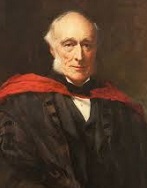
In 1873 English physician Edward Liveing (1832-1919) pub. On Megrim, about the clinical treatment of migraines, along with his theory of its pathogenesis; a big hit, making fans of Oliver Wolf Sacks et al.

In 1874 Andrew Taylor Still (1828-1917) of Baldwin, Kan. invents Osteopathy, "the freedom of flow of all electric or other fluids or substances pertaining to life" - my hand invents that every night?
In 1874 the London Medical School for Women is founded by Sophia Jex Blake, Elizabeth Garrett Anderson, Thomas Henry Huxley, Emily Blackwell, and Elizabeth Blackwell, becoming the first in Britain for women.
In 1874 Bellevue Training School for Nurses in New York City introduces the first hospital record system in the U.S.

In 1876 German physician Heinrich Hermann Robert Koch (1843-1910) (pr. coke) of Wollstein isolates the bacterium causing cattle disease anthrax, validating the germ theory of disease and spurring searches for new agents responsible for TB, cholera, etc. In 1877 he develops the Koch Technique for staining and identifying bacteria - he does it by hand? In 1882 after become a prof. at the Berlin School of Medicine, he isolates the tuberculosis (TB) bacillus. In 1883 he pub. a method for preventive inoculation against anthrax, and identifies the comma bacillus as the cause of cholera while on an official mission to Egypt and India.
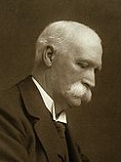
In 1876 Scottish surgeon Sir William Macewen (1848-1924) demonstrates the location of a brain tumor by observation of motor and sensory functions; in 1879 he uses it to perform the first non-primary (trepanned) brain surgery to remove a brain tumor; meanwhile in 1877 he develops the first bone grafts, and in 1880 he develops the technique of endotracheal anesthesia using orotracheal intubation, going on to pioneer surgical removal of lungs to treat TB and lung cancer, Macewen's Operation to cure inguinal hernia, and Macewen's Sign to diagnose hydrocephalus.

In 1880 French physician Charles Louis Alphonse Laveran (1845-1922) discovers the parasite that causes malaria after being sent to Algeria to study it in 1878, winning the 1907 Nobel Med. Prize.
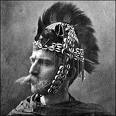
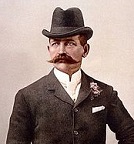
One word: pills? In 1880 Almond, Wisc.-born British entrepreneur Sir Henry Solomon Wellcome (1853-1936) (known for advertising lemon juice as invisible ink at age 16) and Medina, N.Y.-born pharmacist Silas Mainville Burroughs (1846-95) found the Burroughs Wellcome Co. in London, England, going on to trademark the word "Tabloid" and introduce medicine in tablet form imported from the U.S. to England, along with direct marketing to doctors, incl. free samples; in 1955 it merges with Glaxo to become Glaxo Wellcome; Jan. 2000 it merges with SmithKline Beecham to become GlaxoSmithKline - we make ourselves wellcome then burrough in?

On May 21, 1881 the American Red Cross (ARC) is established in Washington, D.C. by former U.S. Civil War hospital nurse Clarissa "Clara" Harlowe Barton (1821-1912) after sha visits Geneva, Switzerland to recover from the war and the Internat. Red Cross asks her to start a U.S. branch, becoming its first pres. for 23 years (until 1904); John D. Rockefeller donates funds for a national HQ one block from the White House; its first major relief operation is helping victims of the Sept. 4-6, 1881 Thumb Fire in Mich., followed by the May 31, 1889 Johnstown Flood in Penn.


In 1882 Viennese physician Joseph Breuer (1842-1925) uses hypnosis to treat hysteria, founding the field of Psychoanalysis; meanwhile French neurologist Jean-Martin Charcot (1825-93) sets up the first neurology clinic in Salpetriere, where he loves to exhibit hysterical women, esp. "Blanche" (Marie Wittman), and grooms French-Polish student Joseph Jules Francois Felix Babinski (1857-1932) - here's how to turn porno into respectable science?

On Aug. 21, 1883 a F5 tornado hits Rochester, Minn., killing 37 and injuring 200+, causing brother surgeons William James Mayo (1861-1939) and Charles Horace Mayo (1865-1939), sons of William Worrall Mayo (1819-1911) to found the Mayo Clinic on Sept. 30, 1889 at St. Mary's Hospital in Rochester, Minn.; on Sept. 30 Charles H. Mayo performs the first modern surgical procedure, the removal of a cancerous growth - you can almost taste the hotdog?
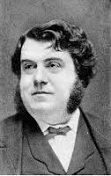
In 1883 Scottish surgeon Robert Lawson Tait (1845-99) (co-founder of gynecology with J. Marion Sims) performs the first Salpingectomy (Fallopian tube removal) to treat bleeding ectopic pregnancy; he goes on to perform the first Ovariectomy (oophorectomy) for pain and for induction of menopause, first drainage of a pelvic abscess, first Cholecystotomy (gallbladder removal) et al.
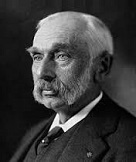
On Nov. 25, 1884 after English physician Alexander Hughes Bennett (1848-1901) diagnoses the location based on neurological findings alone, English surgeon Sir Rickman John Godlee (1849-1925) performs the first primary (exposed) brain tumor removal, founding Brain Surgery; too bad, the patient dies 1 mo. later, causing a firestorm of controversy, setting the field back for a few years.
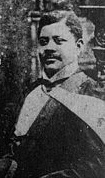
In 1884 Sierra Leonean physician John Farrell Easmon (1856-1900) pub. the pamphlet "The Nature and Treatment of Blackwater Fever", coining the term "blackwater fever" for a malarial infection in which red blood cells bust in the bloodstream, leading to kidney failure.
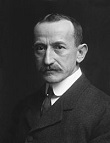
In 1884 Austrian ophtalmologist Karl Koller (1857-1944) first uses cocaine as a local anesthetic for eye surgery, becoming known as Coca Koller after he emigrates to the U.S. in 1888.



In 1884 French neurologist Georges Albert Edouard Brutus Gilles de la Tourette (1857-1904) first medically describes g-d-d-mned-f-ck-in-g (coprolalia) (shit-speaking) (tic malady) Tourette's Syndrome; actually it was called Brissaud's Disease for French physician Edouard Brissaud (1852-1909) after he pub. a description in 1896, but later Jean Martin Charcot (1825-93) restores credit to Tourette - it would have to be Brutus?

In 1885 TB-suffering Am. physician Edward Livingston Trudeau (1848-1915) founds the Trudeau Sanatorium (Andirondack Cottage Sanitarium until 1915) in Saranac Lake, N.Y., becoming a model for promoting the value of fresh air, exercise, and healthy diet; in 1904 he becomes pres. #1 of the Nat. Assoc. for the Study and Prevention of Tuberculosis - make yourself comfortable, cough?

In 1886 Latvian-born German surgeon Ernst von Bergmann (1836-1907) uses steam to sterilize surgical instruments, starting the practice of aseptic surgery.


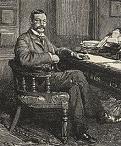
In 1887 Edinburgh, Scotland-born opthalmologist Sir Arthur Ignatius Conan (Gael. "high") Doyle (1859-1930) pub. A Study in Scarlet, which introduces Sherlock Holmes (based on Edinburgh surgeon Dr. Joseph Bell, and named for U.S. Supreme Court justice Oliver Wendell Holmes Jr. and cricket player Sherlock), who wears a deerstalker hat and an Inverness cape, lives at 221B Baker St. in London, has a trusty sidekick named Dr. John H. Watson (who marries his 2nd wife Mary Morstan on May 1, 1889 in Camberwell), plays a 500-guinea Stradivarius violin, likes 7% solution cocaine and morphine, uses the alias Stanley Sigurdson, and applies techniques from the emerging science of forensics to solve the most intractable crimes; Doyle receives £25 for it; the first person to play Holmes on stage is Charles Hallam Elton Brookfield (1857-1913). In 1890 he pub. The Sign of Four; also The Firm of Girdlestone. In Jan. 1891 The Strand Magazine begins pub., with initial circ. of 300K, based in Burleigh St. off The Strand, London, ceasing pub. in Mar. 1950; first ed. (1891-1930) is Herbert Greenhough Smith (1855-1935), who goes on to pub. many Arthur Conan Doyle Sherlock Holmes stories and boost his career. In 1891 Doyle pub. The Adventures of Sherlock Holmes; in the new Strand mag. beginning in the July issue and ending in 1927 after 56 stories; "I play the game for the game's own sake" (Holmes); Holmes and his nemesis Prof. James Moriarty fall to their deaths in May 1891 in Reichenbach Falls in the Dec. 1893 issue, and the public outcry, bordering on nat. mourning forces a reappearance eight years later in A Scandal in Bohemia, which begins with the line "To Sherlock Holmes she is always THE woman" (Irene Adler); the 1893 story The Gloria Scott contains the phrase "the chaplain stood with a smoking pistol in his hand", coining the term "smoking gun". In 1901 he pub. The Final Problem; Sherlock Holmes and his archenemy Prof. Moriarty plunge to their deaths from Reichenbach Falls; a barrage from fans causes Doyle to relent and bring Holmes back in the 1903 story The Adventure of the Empty House, later collected in the book The Return of Sherlock Holmes. In 1902 he pub. The Hound of the Baskervilles; a bloodhound-mastiff cross. In 1912 he pub. The Lost World; an expediton to the Monte Roraima (Tepuyes) Plateau in Venezuela and Guyana by Prof. Challenger, Lord John Roxton, and journalist Ed Malone finds living dinos, early human hominids, and vicious ape-like creatures - this jararaca's on you? His is creation of the super-rational Sherlock Holmes combined with his own irrational belief in Spiritualism is proof that Geminis have a dual nature?

In 1887 the 1-room Hygienic Lab. at the U.S. Marine Hospital on Staten Island, N.Y. is founded under East Bend, N.C.-born asst. surgeon Joseph James Kinyoun (1860-1919) to apply the new science of bacteriology to federal quarantine work, with Kinyoun as dir. #1 (until 1899); in 1891 it moves to Washington, D.C., and in 1902 assumes regulatory responsibility for licensing vaccines and antitoxins, adding noninfectious diseases in 1912, and in 1930 becomes the Nat. Institutes of Health.

In 1888 Am. physician John Harvey Kellogg (1852-1943) of the Battle Creek, Mich. Sanitarium gives the world's first Oxygen Enema to a lucky plucker - did he tear his pants?

In 1889 English physician Sir Wilfred Thomason Grenfell (1865-1940) joins the Royal Nat. Mission for Deep Sea Fisherman, and organizes the first hospital ship for fishermen.
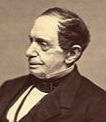

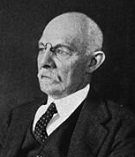
On May 7, 1889 after a bequest from the will of Baltimore merchant-banker Johns Hopkins (1795-1873), $2M Johns Hopkins Hospital in Baltimore, Md. opens, utilizing state-of-the-art heating and ventilation to check the spread of disease; Canadian-born physician Sir William Osler (1849-1919) becomes its first chief physician, helping found the Johns Hopkins U. School of Medicine next year, and becoming one of its first professors of medicine, organizing a model teaching clinic, causing him to become known as "the Father of Modern Medicine"; in 1890 rubber gloves are first used in surgery in Johns Hopkins Hospital in Baltimore, Md. after New York-city-born surgeon William Stewart Halsted (1852-1922), who performed the first complete radical mastectomy in the U.S. in 1882 (which becomes the std. treatment) proposes Halsted's Principles of Asepsis, going on to design the U.S. residency training system; in 1892 Osler pub. The Principles and Practice of Medicine, which becomes the #1 medical textbook until the 1930s; in 1897 it turns on John D. Rockefeller, causing him to found the Rockefeller Inst. for Medical Research in June 1901, which later becomes Rockefeller U.; in 1903 Osler leaves to fill the regius chair of medicine at Oxford U.
In the 1890s Western doctors and surgeons begin using surgical gloves filled with powder made from club moss spores or ground pine pollen; in the 1930s talcum powder begins to be used, followed in 1947 by cornstarch; in Mar. 2016 the U.S. FDA bans powdered gloves as a health hazard.
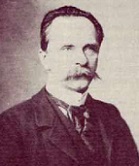
In May 1890 German surgeon Themistocles Gluck (Glück) (1853-1942) performs the first knee arthroplasty, inserting a hinged ivory joint in the knee of a 17-y.-o. girl, also the first total wrist arthroplasty; in 1891 he performs the first hip replacement surgery, using ivory to replace the femoral head, held with nickel-plated screws, Plaster of Paris, and glue made of pumice and resin - that should hold an elephant?
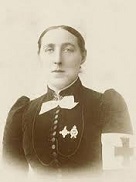
In Nov. 1890 English nurse-missionary Kate Marsden (1859-1931) is sent by Tsarina Maria Fedorovna on a 2K-mi. journey across Siberia to find a fabled herb that cures leprosy, which turns out not to work; too bad, when she returns, the Victorian establishment hounds her for lesbianism instead of praising her for heroism.



The unbearable lightness of Behring? In 1890 Emil Adolph von Behring (1854-1917) discovers antitoxins in the Berlin lab of physician Robert Koch (1843-1910) while working with Shibasaburo Kitasato (1853-1931) of Japan, and formulates Behring's Law, that blood serum from an individual who had contracted and survived a disease can be used to produce immunity to the same disease in another individual; he first applies it to tetanus, then diphtheria, then cattle TB; meanwhile Koch produces a substance he calls tuberculin, claiming it to be a cure for TB, but later finds it meanwhile Koch produces a substance he calls tuberculin, claiming it to be a cure for TB, but later finds it useful only in diagnosis; von Behrin wins the 1901 Nobel Med. Prize for the discovery of the diphtheria antitoxin serum, while Kitasato is snubbed.

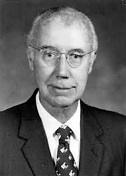
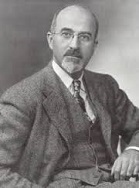

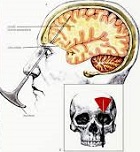

In 1890 Swiss psychiatrist Johann Gottlieb Burckhardt (1836-1907) performs the first lobotomy (frontal lobe removal) operations; too bad, one patient dies after the operation, another is found dead in a river 10 days later, and the rest exhibit altered behavior. On Nov. 12, 1935 Portuguese neurologist Antonio (António) Caetano de Abreu Freire Egas Moniz (1874-1955) performs the first prefrontal leucotomy (lobotomy) by drilling holes in the patient's head and injecting alcohol to destroy the tissue, later using a leucotome (retractable wire loop) - so alcoholics are just trying to give themselves leucotomies? On Sept. 14, 1936 after Watts loses his license to perform surgery when his patient dies on the operating table, Am. neurosurgeon James Winston Watts (1904-94) is directed by Am. physician Walter Jackson Freeman II (1895-1972) to perform their first frontal lobotomy on housewife Alice Hood Hammatt of Topeka, Kan., going on to popularize it in the U.S. The Uline Ice Co. presents Doctor Egomaniac AKA Doctor Eager Money? In 1949 after U.S. doctors Walter Freeman and James W. Watts adopt the technique of Egas Moniz, who claimed a 30% success rate and became the country's first (only) Nobel Prize in Medicine winner for his barbaric "apple corer", and Freeman develops the nasty ice pick technique for prefrontal lobotomies, charging only $25 and wearing no surgical gloves or mask, one is performed on Rosemary (Rose Marie) Kennedy (1918-2005), daughter of Joseph P. Kennedy and Rose Kennedy, which leaves her childlike and in need of institutionalization; by 1951 18K+ lobotomies are performed in the U.S. alone; they are not discontinued in favor of drug treatment until the 1960s after Freemon is banned from performing surgery in 1967.
On Sept. 6, 1891 Am. surgeon Henry C. Dalton (1847-?) of St. Louis, Mo. performs the first successful pericardial sac repair operation on a 22-y.o. man with a stab wound in the heart.

In 1891 antibodies are first proposed as responsible for disease immunity by German scientist Paul Ehrlich (1854-1915). In the 1900s he pioneers the treatment of diseases with chemicals. In 1910 he introduces Salvarsan (Arsphenamine) as a specific remedy for pesky syphilis - save our sanity, this will sound like a bad joke, but if only more Germans went into science instead of the Wehrmacht? In 1912 he introduces the topical antiseptic Acriflavine.
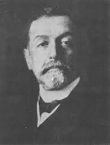
In 1892 Czech Jewish psychiatrist Arnold Pick (1851-1924) first describes Frontotemporal Dementia (FTD), resulting from Pick's Disease, characterized by a build-up of tau proteins in neurons.

On July 10, 1893 African-Am. surgeon Daniel Hale Williams (1856-1931), 1891 founder of Provident Hospital in Chicago, Ill., the first interracial hospital and training school for black nurses and interns performs the second successful pericardial sac repair operation on heart stab patient James Cornish.
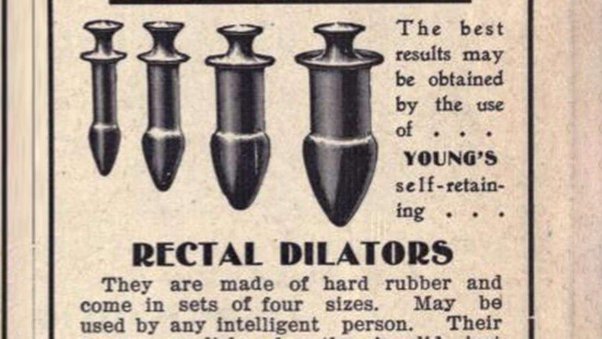
In 1893 self-retaining hard rubber Dr. Young's Ideal Rectal Dilators hit the market as a cure for all mental health problems; their sale is shut down in 1940 by the U.S. atty. for the Southern District of N.Y.

In 1893 Russian neurologist Vladimir Mikhailovich Bekhterev (1857-1927) gives the first modern description of Ankylosing Spondylitis, causing it to become known as Bekhterev's Disease.

On Sept. 4, 1895 Norwegian surgeon Axel Hermansen Cappelen (1858-1919) performs the first successful cardiac surgery on a heart stab victim, who dies on Sept. 6 of complications (coronary occlusion).

On Dec. 28, 1895 after producing and detecting them for the first time on Nov. 8, German physicist Wilhelm Konrad (Conrad) Roentgen (Röntgen) (1845-1923) of Wurzburg U. in Germany pub. Eine Neue Art von Strahlen, announcing the discovery of X-Rays (X for unknown, like in algebra) (AKA Roentgen Rays) the year before while fooling around with a Crookes Tube (CRT) when a photographic plate enclosed in a dark box came out fogged, proving that the box walls are transparent to them; he soon is taking X-ray photos of the hand, launching a new era in medicine - imagine what else?
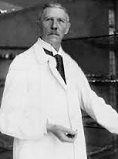
On Sept. 7, 1896 after performing the first successful thyroidectomy in 1880, and reporting a connection between aniline and bladder cancer in 1895, German surgeon Ludwig Wilhelm Carl Rehn (1849-1930) of Frankfurt performs the first successful (complication-free) cardiac surgery on 22-y.-o. stab victim Wilhelm Justus; too bad, cardiac surgery isn't widely accepted until WWII battlefield surgeons resort to it.
In 1896 the Am. Nurses Assoc. (ANA) (originally the Nurses Associated Alumnae of the United States of America) is founded in New York City, moving the HQ to Silver Spring, Md.; it goes on to found the Am. Nurses Foundation (1955), the Am. Academy of Nursing (1973), and the Am. Nurses Credentialing Center (1973).

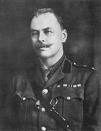
In 1897 after Scottish physician Sir Patrick Manson (1844-1912) suggests the hypothesis, Indian-born English physician Sir Ronald Ross (1857-1932) discovers in Secunderabad, India that malaria isn't caused by breathing bad air, but by a parasite (bacillus) transmitted by the Anopheles (Gk. "useless") mosquito, which he finally isolates on Aug. 21 after having one bite patient Hussain Khan, then using birds to trace out its life cycle, winning him the 1902 Nobel Med. Prize.



In 1899 Austrian physician Sigmund Freud (1856-1939), who coined the term "psychoanalysis" in 1896 pub. The Interpretation of Dreams (Traumleutung), launching a scientific craze-cult, which goes on to this day; he gets a whopping $200 for it - not enough porno in it to pay more? In 1905 he pub. Three Contributions to the Theory of Sex, which links sex to anxiety, and claims that childhood experiences determine sexual orientation - shocks the Victorianism out of readers? In 1907 Austrian-born Am. psychiatrist Abraham Arden Brill (1874-1948) performs tests with Carl Jung at the Zurich Psychiatric Clinic which corroborate the theories of Sigmund Freud (1856-1939), also of Zurich; next year Brill returns to the U.S., becoming the first to introduce Freudian psychoanalysis to the U.S. In 1912 Carl Gustav Jung (1875-1961) pub. Psychology of the Unconscious (Wandlungen und Symbole der Libido), breaking with Freud.
About 1900 Am. surgeon cCharles H. Cargile (1853-1930) begins using the sterile Cargile Membrane, made from the peritoneum of the ox.
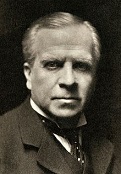
In 1900 English surgeon-opthalmologist Edward Treacher Collins (1862-1932) first describes Treacher Collins Syndrome, characterized by deformities of the face and head.

In the early 1900s Am. neurosurgeon Harvey Williams Cushing (1869-1939) develops basic modern brain surgery techniques.




In 1900 U.S physician Walter Reed (1851-1902) of the Army Medical College in Washington, D.C. heads a commission sent to Cuba to investigate the cause and transmission of yellow fever, and discovers that it is transmitted by the mosquito Aedes aegypti, just like old Carlos Finlay had claimed back in 1881, allowing William Crawford Gorgas (1854-1920) to virtually eliminate the disease from Havana within 3 mo.; meanwhile four people, incl. U.S. physician James Carroll (1854-1907) allow themselves to be infected to help research treatment; the idea that insects cause disease still finds little public acceptance? On May 1, 1909 Walter Reed Gen. Hospital in Washington, D.C. is founded, named after U.S. Army yellow fever physician Maj. Walter Reed (1851-1902), growing from 80 to 5.5K beds; in 1951 it is renamed Walter Reed Army Medical Center; it is disbanded on Aug. 27, 2011.

In 1900-1 Austrian-born Jewish-Am. scientist Karl Landsteiner (1868-1943) discovers A-B-AB-O blood grouping based on the presence of agglutinins, winning him the 1930 Nobel Med. Prize. In 1909 he, Constantin Levaditi (1874-1953) of Romania, and Erwin Popper (1879-1955) of Austria discover the Polio Virus.
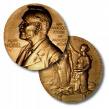







On Dec. 10, 1901 (St. Lucia's Day) (5th anniv. of Alfred Nobel's death) (4:30 p.m.) the first Nobel Prizes are awarded in the Stockholm Concert Hall after a rehearsal; Red Cross founder Jean Henri (Henry) Dunant (1828-1910) of Switzerland and Frederic Passy (1822-1912) of France win the first Nobel Peace Prize (done that, it's passe?); Rene Francois Armand Sully Prudhomme (1839-1907) of France wins for Literature; 6 of the first 9 lit. winners wear beards (Giosue Carducci's is the most bristly and pointy); Wilhelm Konrad (Conrad) Roentgen (Röntgen) (1845-1923) of Germany wins for Physics [X-rays]; Jacobus Henricus van't Hoff (1852-1911) of the Netherlands wins for Chemistry [stereochemistry], and Emil Adolph von Behring (1854-1917) of Germany wins for Medicine and Physiology (antitoxins); the first Nobel Prize Medals (23-carat, 2.5 in. diam., .25 kg), designed by Swedish artist Erik Lindberg (1873-1966) are minted next year, with a bas-relief of Alfred Nobel on the obverse, and Isis and the genius of Science (lifting a veil from her face) on the reverse; women only get 34 of the first 800?

In the early 1900s Am. neurosurgeon Harvey Williams Cushing (1869-1939) develops basic modern brain surgery techniques.
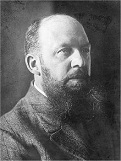
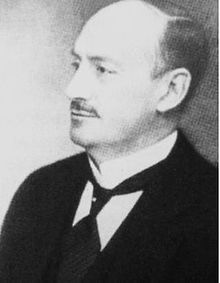
In 1901 German surgeon Georg Kelling (1866-1945) of Dresden performs the first Laparoscopic surgery on dogs; the first laparoscopic surgery on humans is performed in 1910 by Hans Christian Jacobaeus (1879-1937) of Sweden.
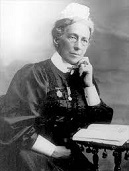
On Sept. 12, 1901 New Zealand passes the Nurses Registration Act, requiring nurses to complete three years of training and pass a state-administered exam, making New Zealand the first country to regulate nurses; on Jan. 10, 1902 Ellen Dougherty (1844-1919) becomes the first registered nurse on Earth; in 1919 the U.K. begins registration of nurses. In 1901 the U.S. Army Nurse Corps is founded, eventually employing registered nurses only; in 1908 the U.S. Navy Nurse Corps is founded, admitting males in 1965; in 1909 the Am. Red Cross Nursing Service is founded as the reserve of the U.S. Army Nurse Corps.

In 1902 French physician Charles Robert Richet (1850-1935) discovers Anaphylaxis, winning him the 1913 Nobel Med. Prize.
On Apr. 20, 1903 the Armstrong Nursing Practice Act of 1903 is passed by the New York state assembly, requiring registration of nurses.

In 1903 Willem Einthoven (1860-1927) of Holland invents the heavy-magnet Electrocardiograph, and takes the first electrocardiogram (ECG) (EKG), winning him the 1924 Nobel Med. Prize; he invents Einthoven's Triangle on the chest as the points to attach the leads, along with the PQRST terminology for the various deflections.
In 1903 German physician Carl Joseph Gauss (1875-1957) develops the Freiburg Method of Twilight Sleep using a combo of morphine and scopolamine as a surgical anesthesia to replace chloroform during childbirth.

In 1905 French surgeon Alexis Carrel (1873-1944) emigrates to the U.S., going on to develop new methods of suturing blood vessels and grafting veins and arteries. In 1922 he discovers white corpuscles.



In 1905 Italian physician Aldo Castellani (1877-1971) discovers the cause of the infectious tropical disease Yaws (which causes disfiguring raspberry-like skin lesions) as the spirochete Treponema pertenue, which is closely related to the syphilis spirochete. In 1905 German zoologist Fritz Schaudinn (1871-1906) and German dermatologist Erich Hoffmann (1868-1959) of Germany isolate Spirochaeta pallida, the organism causing syphilis at the Berlin Charite Clinic - too late for superman Nietzsche?


In 1905 German chemist Alfred Einhorn (1857-1917) uses Benzocaine to invent non-addictive Procaine, AKA Novocaine (Novocain) (Lat. "new" + caine meaning alkaloid used for an anesthetic); in 1907 German dentist Heinrich Friedrich Wilhelm Braun (1862-1934) introduces it into dentistry to replace addictive cocaine.
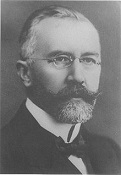
On Mar. 16, 1907 Austrian surgeon Hermann Schloffer (1868-1937) performs the first successful removal of a pituitary tumor at the U. of Innsbruck through a superior nasal transsphenoidal route; in 1916 he becomes the first to perform a splenectomy.

In 1909 Dr. Frederick S. McKay (1874-1959) of Colo. Springs, Colo. discovers the concept of water fluoridation to prevent cavities. In 1967 the 20-year Evanston Fluoridation Study in Ill. shows that fluorides in the water supply reduce dental caries by 58%.


In 1910 the Flexner Report (Medical Education in the United States and Canada), written by nonphysician Abraham Flexner (1866-1959), working for the Carnegie Foundation for the Advancement of Teaching (founded 1905) and the Am. Medical Assoc. (AMA) describes every medical school in the U.S. and Canada, denouncing many of them as inadequate while praising Johns Hopkins U. (founded 1893) as a model along with German educational methods, resulting in many school closings and more expensive lab training and in-hospital training; part of a sinister conspiracy of the Robber Barons to monetize medicine and suppress natural medicine?

In 1910 Hull House resident member Alice Hamilton (1869-1970) (sister of Edith Hamilton) founds the field of occupational medicine, being appointed to the Occupational Diseases Commission of Ill. (first such investigative body in the U.S.), relying on "shoe leather epidemiology" and toxicology to influence legislative reforms to improve worker health; in 1919 she becomes the first woman faculty member of Harvard U., with the New York Tribune carrying the headline "A Woman on Harvard Faculty - The Last Citadel Has Fallen - The Sex Has Come Into Its Own".


In 1911 after getting fed-up with women's ignorance about sexuality and birth control when she sees "Sadie" die of a self-induced abortion, Corning, N.Y.-born nurse-activist Margaret Sanger (1879-1966) pub. the pamphlet "What Every Mother Should Know", followed in 1914 by the monthly mag. "The Woman Rebel", with the slogan "No Gods, No Master", and the pamphlet/book Family Limitation, the first book on "birth control" (which she coins), getting her prosecuted under the 1873 U.S. Comstock Act, causing her to flee to Britain, during which time her estranged husband (since 1913) is convicted of giving a copy of the book to old fart anti-vice U.S. postal inspector Anthony Comstock (1844-1915), getting 30 days in jail while she meets Havelock Ellis and learns about making sexual intercourse more pleasurable before visiting Holland and learning about diaphragms; on Oct. 16, 1916 she opens the first birth control clinic in the U.S. at 46 Amboy St. in Brownsville, Brooklyn, N.Y., getting her arrested along with her sister Ethel Byrne, who becomes the first woman in the U.S. to be force-fed in jail; in 1917 she begins pub. the monthly mag. Birth Control Review (until Jan. 1940); after appealing her Brownsville, conviction, in 1918 N.Y. Court of Appeals Judge Frederick Evan Crane (1869-1947) permits doctors to prescribe contraceptives and distribute contraceptive info. to women, helping her birth control movement go nat; on Nov. 1, 1921 founds the Am. Birth Control League (ABCL). In 1929 she founds the Nat. Committee on Federal Legislation for Birth Control, and begins a legal challenge to the Comstock Laws resulting in a 1936 U.S. Court of Appeals victory in U.S. v. One Package of Japanese Pessaries, overturning the prohibition of physicians from prescribing contraceptives and distributing contraceptive info., causing the Am. Medical Assoc. (AMA) in 1937 to adopt contraception as a regular medical service and begin teaching it in medical schools; in 1939 she founds the Birth Control Federation of Am., followed in 1946 by the Internat. Committee on Planned Parenthood, and in 1952 by the Internat. Planned Parenthood Federation in Bombay, India, which expands by 2015 to 189 countries after moving the HQ to London, England. On June 7, 1965 the U.S. Supreme Court by 7-2 rules in Griswold v. Connecticut that the 1879 Conn. law prohibiting the sale of contraceptives to married couples is unconstitutional because "Specific guarantees in the Bill of Rights have penumbras, formed by emanations from those guarantees that help give them life and substance (William O. Douglas); "The right of freedom of speech and press includes not only the right to utter or to print, but the right to distribute, the right to receive, the right to read... and freedom of inquiry, freedom of thought, and freedom to teach"; JFK apointee Byron White votes with the majority, but doesn't go along with the existence of a Constitutional right of privacy, which is later used to legalize unmarried sex in Eisenstadt v. Baird (1972), abortion in Roe v. Wade (1973), and gay sex in Lawrence v. Texas (2003).

In 1912 Am. brain surgeon Harvey Williams Cushing (1869-1939) discovers an endocrinological syndrome caused by malfunction of the pituitary gland, which in 1943 is named Cushing's Syndrome.

In 1913 after finishing his course of medicine and surgery (begun 1905) at the U. of Strasbourg in 1911, and marrying Helen Bresslau in June 1912, Franco-German "Reverence for Life" brain man Albert Schweitzer 1875-1965) opens a hospital in Lambarene (Lambaréné), French Congo (Equatorial Africa) on the Ogooue River in modern-day Gabon (until 1917), caring for 2K patients the first year; the French imprison him as a German national during WWI in 1917-8, and he returns in 1924 sans wife, expanding his hospital and benefitting from new drugs, returning to Europe in 1927, and back to Africa in 1929-32, 1935, and 1937-48, becoming world famous and winning the 1952 Nobel Peace Prize.


On Aug. 4, 1914 - Nov. 11, 1918 the horrific World War I causes 15M deaths and 39M military casualties. and destroys the Old Order of white formerly Christian Europe. On Feb. 26-28, 1915 the Germans first use a Flamethrower (Flame Projector) in the village of Douaumont, France near Verdun, becoming the first of 653 flamethrower attacks in the war. On Apr. 1, 1915 French aviator Roland Garros (1888-1918) becomes the first pilot to shoot down an aircraft using a deflector gear, which allows shooting through the propeller; after more Vs against German aircraft on Apr. 15 and Apr. 18, he is shot down and the Germans capture his plane, after which Dutch designer Anthony (Anton Herman Gerard) Fokker (1890-1939) clones then improves the deflector gear into the synchronization (interrupter) gear, mounting them on the new Fokker E.I. in Aug., beginning the Fokker Scourge as they shoot down nearly every enemy aircraft they encounter and generate the first German aces, incl. Max Immelmann; next year the French counter with the Nieuport 11 Bebe (Bébé), in which the gun is mounted on the top wing clear of the prop, and the British with the F.E.2b and D.H.2 (Feb. 1916), which mount the engine backwards with the prop in back, causing them to be called "pushers", ending the Fokker Scourge by spring 1917. In 1915 arsenic-based vomiting-sneeze gas Adamsite (DM) (diphenylaminechlorarsine) is synthesized by Heinrich Otto Wieland (1877-1958) of Germany; in 1918 Roger Adams of the 1918 duplicates it, and both sides stockpile it, but it is allegedly never used on the battlefield. On Mar. 22, 1916 the British have their first success with their new Depth Charge off the SW coast of Ireland, destroying a German U-boat. Are you used to Hell yet, try this? On Sept. 15, 1916 Winston Churchill's pet project the Tank (Russian Water Closet) (Char-Schneider) is first used by the Brits in the Somme.
On Mar. 27, 1914 Belgian physician Albert Hustin (1822-1967) performs the first non-direct blood transfusion.


In 1915 the bacteria-killing Bacteriophage, a virus that infects bacteria is discovered by British physician Frederick William Twort (1877-1950); in 1917 French-Canadian microbiologist Felix d'Herelle (d'Hérelle) (1873-1949) independently discovers it.
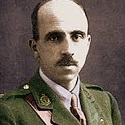
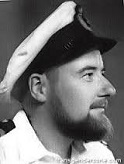
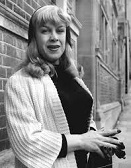
In June 1917 Kiwi surgeon Sir Harold Delf Gillies (1882-1960) opens Queens Hospital in Sidcup, England for injured British soldiers, pioneering modern Plastic Surgery; in 1946 he performs the first British sex reassignment surgery from female to male on British physician Laurence Michael (Laura Maud) Dillon (1915-62), who becomes the world's first transsexual; in 1951 after Dillon perfoms an orchidectomy on her, Gillies performs the first British sex reassignment surgery (vaginoplasty) from male to female using a flap technique on Roberta Elizabeth (Robert) Marshall Cowell (1918-2011).
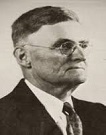
In 1917 Am. pathologist David Marine (1888-1976) and his asst. O.P. Kimball begin giving iodide to a large group of schoolgirls in Ohio until 1922, after which they note a reduction in the development of goiter, leading to the iodization of marine, er, salt.

In 1917 Austrian egghead Julius Wagner-Jauregg (1857-1940) treats syphilitic paralysis by injecting malarial parasites, winning the 1927 Nobel Med. Prize.
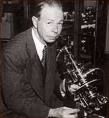
In 1920 former Carl Zeiss Co. employee Royal Raymond Rife (1888-1971) of the U.S. invents the first microscope for viewing viruses; unlike electron microscopes, it doesn't kill them; too bad, it later turns out that he is only viewing bacilli; also too bad, he goes on to claim that viruses cause cancer, that the cure is RF energy of the "Mortal Oscillatory Rate", usually 10K-100K, and builds a Beam Ray Machine for his cancer clinic, causing the AMA to get his medical license revoked; the 1980 book The Cancer Cure That Worked by Barry Lynes attempts to rehabilitate him.


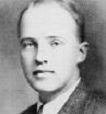

In 1921 Canadian physiologists Frederick Grant Banting (1891-1941), James Bertram Collip (1892-1965), and Charles Herbert Best (1899-1978), working under the direction of Scottish physiologist and diabetes researcher John James Rickard Macleod (1876-1935) discover and isolate Insulin, and share the 1923 Nobel Med. Prize, except for Best, who is snubbed, pissing-off Banting, who shares half of his prize money with him - macleodly banting the best part of the dough?



In 1921 the BCG (Bacillus Calmette-Guerin) Vaccine for TB, developed by French bacteriologist Leon Charles Albert Calmette (1863-1933) and French immunologist Jean-Marie Camille Guerin (Guérin) (1872-1961), with help from Norwegian physician Kristian Feyer Andvord (1855-1934), in development since 1906 is perfected and tested on newborns in the Paris Charite; too bad, in 1930 a bad batch causes 72 children in Lubeck, Germany to contract TB, freaking out Calmette, who dies the next year, after which production techniques are tightened.

In 1923 husband-wife Am. physicians (with names like that they better be married?) George Frederick Dick (1881-1967) and Gladys Rowena Henry Dick (1881-1963) isolate the cause of scarlet fever to a toxin produced by a strain of Streptococcus bacteria, going on to create an anti-toxin for immunization - too late for poor Beth March?
On Feb. 26, 1924 the Am. Heart Assoc. (AHA) (originally the Am. Assoc. for the Prevention and Relief of Heart Disease) is founded in New York City by six cardiologists.
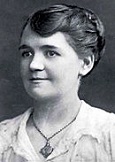
On Mar. 14, 1924 English textile worker Nellie Kershaw (1891-1924) dies, becoming the first case of Asbestosis to be described in the medical lit., and the first pub. account of a disease caused by occupational asbestos exposure; when her employer Turner Brothers Asbestos refuses to accept any responsibility, there is a British govt. investigation, which officially acknowledges the existence of asbestosis and its causation by asbestos inhalation, passing the first asbestos industry regulations in 1931, taking effect on Mar. 1, 1932; meanwhile the first lawsuit against an asbestos manufacturer is filed in 1929.
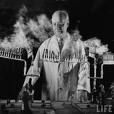
In 1924 Am. surgeons Warren Henry Cole (1898-1990) and Evarts Ambrose Graham (1883-1957) develop Oral Cholecystography to visualize the gallbladder and bile ducts to detect disease.
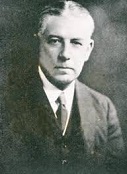
In 1925 English surgeon Sir Henry Sessions Souttar (1875-1964) pioneers open heart surgery for a congenital heart defect (mitral stenosis), becoming the world's first cardiac surgeon; too bad, his colleagues prevent him from repeating it, and it takes until 1948.
In 1925 the Sanborn Co. of Cambridge, Mass. introduces the first Portable EKG Machine.

In 1928 Am. chemical engineer Philip Drinker (1894-1972) and moonshiner Louis Agassiz Shaw Jr. (1886-1940) develop the Iron Lung (Drinker Respirator) - drink up that fresh air? In 1931 John Haven "Jack" Emerson (1906-97) invents an oxygen tent, along with an improved iron lung, causing Drinker to sue him, backfiring and causing his patents to be declared invalid.



The Syph meets its match with a Flaming Chain of Flowers fighting Sir Inflammation? In 1928 Scottish researcher Sir Alexander Fleming (1881-1955) discovers Penicillin after observing that Penicillium notatum westling bacteria does not grow on nutrient agar surrounding orange mold, and announces it next year, becoming the first to propose its use as an antibacterial agent in medicine, although it takes until WWII to get it developed (1943); in 1945 he shares the Nobel Prize in Medicine with German-born British biochemist Sir Ernst Boris Chain (1906-79) and Australian pathologist Sir Howard Walter Florey (1898-1968), who learn how to prepare it, and clinically prove its effectiveness as an antibiotic; during WWII methods of obtaining pure penicillin are perfected - as long as hos don't start popping P-pills like candy?
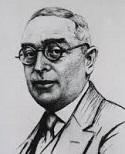

In 1928 Hungarian-born Jewish Am. pediatrician Bela Schick (1877-1967) begins a massive 5-year campaign in conjunction with the Metropolitan Life Insurance Co. that virtually eliminates diphtheria in the U.S.; this year it attacks 100K Americans and causes 10K deaths; the 85M brochures handed out are created by German-born artist Gerta Ries; in 1906 Shick and Austrian pediatrician Clemens Peter Freiherr von Pirquet (1877-1929) coin the term "allergy" (Gek. "allos" + "ergon" = other reaction).

In 1929 German physician Werner Forssmann (1904-79) performs the first human cardiac catherization, on himself, winning him a share of the 1956 Nobel Med. Prize.

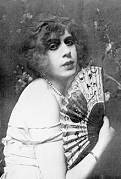
In June 1931 after being castrated in 1922, Dora Richter (born Rudolph Richter) (b. 1891) of Berlin, Germany becomes the first transgender woman to undergo a vaginoplasty by Dr. Levy-Lenz and Dr. Gohrbrandt in Germany; meanwhile "the Einstein of Sex" Magnus Hirschfeld (1868-1935), who performs sex reassignment surgery on Danish painter Lili Elbe (Einar Magnus Andreas Wegener) (1882-1931) in Dresden, who dies of cardiac arrest and organ rejection on Sept. 13 Dresden, Germany from an unsuccessful uterine transplant.
On Mar. 30, 1933 the first Doctor' Day is observed in Winder, Ga. in commemoration of the day in Jefferson, Ga. that Dr. Crawford Long first used ether to anesthetize patient James Venable; on Oct. 30, 1990 Pres. George H.W. Bush signs Public Law 101-473, creating Nat. Doctor's Day.
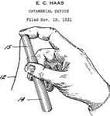
On Sept. 12, 1933 Denver, Colo. physician Earle Haas (1888-1981) patents the first Tampon with applicator (#1,926,900), selling it on Oct. 16 to Gertrude Tenderich (tender itch?) of Denver, Colo. for $32K, who founds the Tampax Co.; in 1935 Kimberly-Clark turns it down for $7.2K; the first deodorant tampon is introduced by Playtex in 1971; the Nat. Assoc. of Broadcasters bans them from TV until 1972.

In 1938 the psychedelic drug LSD (lysergic acid diethylamide) is first synthesized by Swiss physician and chemist Albert Hofmann (1906-2008) at Sandoz Labs in Basel from ergot, a fungus that grows on rye; on Apr. 19, 1943 (Bicycle Day) he becomes the first person to take an acid trip, experiencing the most intense systems while bicycling home from his lab, uttering the soundbyte: "There surged upon me an uninterrupted stream of fantastic images of extraordinary plasticity and vividness and accompanied by an intense, kaleidoscopelike play of colors."



On Sept. 1, 1939 - Sept. 2, 1945 the horrific $3.5T World War II resulted in 24M military and 49M civilian deaths, and featured the low point of the Jewish Holocaust (Shoah) by the German Nazis, I guess it was the Jews' fault for not ransoming themselves to go to Israel before they could round them up for the camps. The whole experience turned Jews from lovers into fighters, ramping up the Zionist movement with full world sympathy and support by new world superpower U.S., which had its own guilt trip because on Nov. 24, 1942 Budapest-born Am. Zionist leader Rabbi Stephen Samuel Wise (1874-1949) announced in a press conference in Washington, D.C. that he was authorized by the U.S. State Dept. to confirm that the Nazis had murdered 2M Jews as part of a plan to exterminate all Jews in Europe; too bad, the nat. newspapers didn't consider it front page news, and the U.S. govt. did nada. After the war ended and Americans toured the concentration camps in horror, Polish-born Jewish scholar Raphael Lemkin (1900-59), who single-handedly led an unsuccessful campaign to get the League of Nations to give internat. protections against genocide starting in 1933 finally got what he wanted after his own people got it, namely the Dec. 9, 1948 U.N. Convention on the Prevention and Punishment of the Crime of Genocide (Gen. Assembly Resolution 260), which didn't come in force until Jan. 12, 1951, and which the U.S. still didn't ratify until 1988.

In 1940 African-Am. physician (inventor of Scotch Tape) Charles Richard Drew (1904-50) invents the Blood Bank to provide blood for Britain; too bad, he is prohibted by segregation laws from donating his own blood; after having an auto accident in 1950 he bleeds to death, causing a false rumor that he had been refused treatment by a hospital because he was black.
On Sept. 28, 1940 Am. surgeon Austin T. Moore (1899-1963) performs the first metallic hip replacement surgery at Columbia Hospital in S.C. using the cobalt-chrome alloy Vitallium and bolted to the end of the femoral shaft; in 1952 the improved Austin Moore Prosthesis is introduced, which is inserted inside the femur's meduallary shaft.
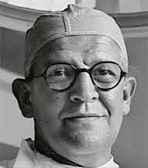
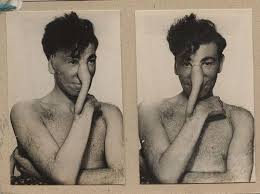
In 1941 the Guinea Pig Club (originally the Maxillonians) is founded at the Queen Victoria Hospital in East Grinstead, West Sussex England by RAF airmen receiving burn treatment by Kiwi plastic surgeon Sir Archibald Hector McIndoe (1900-60), who pioneers the walking-stalk skin graft, and discovers the benefit of immersion in sale for burn patients, becoming known for the McIndoe Nose.
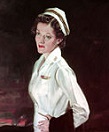
On Apr. 5, 1942 as U.S. and Filipino troops attend Easter Sun. services, Japanese forces attack Bataan, Philippines; at 10 a.m. the 4th Japanese Div. attacks, and is resisted by the 21st Philippine Div., which is pushed back, losing the division HQ, along with Brig. Gen. Mateo Capinpin; on Apr. 6 the U.S. 26th Cavalry Regiment attacks sans horses, which have all been eaten, and after being pummeled they scatter into the hill and turn guerrilla; the Japanese take Bataan with a total of only 630 casualties; 11 Navy and 66 Army Nurses are captured and imprisoned near Manila, becoming known as the Angels of Bataan (Battling Belles of Bataan), nursing POWs until they are liberated in Feb. 1945; Ann Agnes Bernatitus (1912-2003), who was evacuated from the Philippines before the fall of Corregidor becomes the only Navy nurse to evade captue, becoming the first Am. recipient of the Legion of Merit in Oct. 1942.
On July 1, 1944 after the Nat. Inst. of Health (NIH) demonstrates its value in creating a typhus vaccine and proving the lifesaving value of plasma in WWII, the U.S. Public Health Service Act authorizes the NIH to award grants and fellowships; in 1948 the NIH becomes the Nat. Insts. of Health, growing to a $17B annual budget by the end of the cent., 80% going to research grants.

In 1944 Austrian pediatrician Hans Assburger, er, Hans Asperger (1906-80) first describes Asperger's Syndrome, a high-functioning form of autism.
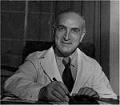
In 1944 after Margaret Sanger ransoms him from a Nazi prison in 1940, German Jewish gynecologist Ernst Grafenberg (Gräfenberg) (1881-1957) of New York City hypothesizes the existence of the G-spot (Grafenberg Spot), a primo hot female erogenous zone inside the you know what, which is scientifically proved next year; the name G-spot is coined in 1981 by Addiego et al. - he's against it, but it's so good that it sticks?

In 1944 Dutch-born Am. physician Willem Johan "Pim" Kolff (1912-2009) invents Kidney Dialysis using sausage casings and orange juice cans, making him "the Father of Artificial Organs"; he goes on to co-invent the Jarvik-7 artificial heart in 1982 with Robert Jarvik.
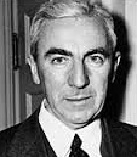
In 1944 Harvard-educated OBGYN John Rock (1890-1984) and his team perform the first In Vitro Fertilization (IVF) of human embryos.

In 1947 Buffalo, N.Y.-born pathologist Sidney Farber (1903-73) develops the first treatment for childhood acute lymphoblastic leukemia, the folate antagonist aminopterin, going on to become "the father of modern chemotherapy" and "the father of pediatric pathology".
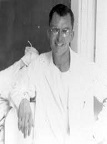
The heart of a surgeon? In July 1948 the first successful mitral valve repair (valvulotomy) operations to correct mitral stenosis resulting from rheumatic fever since 1925 are performed independently by Am. cardiac surgeons Horace Gilbert Smithy Jr. (1914-48), Charles Philamore Bailey (1910-93) et al.; too bad, Smithy dies on Oct. 28 of heart failure in Charleston, S.C. after he can't convince anyone to perform his own surgery on him.

In 1951 Roanoke, Va.-born African-Am. cancer patient Henrietta Lacks (nee Loretta Pleasant) (b. 1920) dies of cervical cancer on Oct. 4 at Johns Hopkins Hospital in Baltimore, Md., and her cancer cells are discovered to be virtually immortal, causing them to be used in medical research under the name HeLa, incl. by Jonas Salk to develop his polio vaccine; too bad, she never consents, and her family isn't told until 1975.
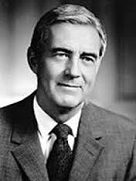
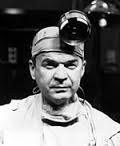
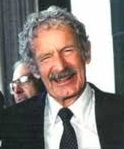
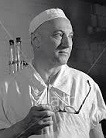
On Sept. 2, 1952 after Wilfred Gordon "Bill" Bigelow (1913-2005) of the U. of Toronto discovers that open heart surgeries are best done after the heart is stopped and drained of blood, Clarence Walton "Walt" Lillehei (1918-99) and Floyd John Lewis (1916-93) of the U. of Minn. perform the first successful open heart surgery to correct a congenital heart defect using hypothermia; in 1953 Soviet surgeon Alexander Alexandrovich Vishnevsky (1906-75) does it using only local anesthesia after making the patient's blood bypass his exposed heart.
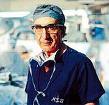
In 1953 Am. surgeon Michael Ellis DeBakey (1908-2008) performs the first successful Carotid Endarterectomy (removal of material from the inside of an artery). In 1958 he performs the first Patch-Graft Angioplasty using Dacron grafts.


In 1953 Am. medical researchers Ernst Ludwig Wynder (1922-99) and Evarts Ambrose Graham (1883-1957) report that tobacco tar condensates can induce cancer when painted on the backs of mice; in 1950 they pub. research showing that lung cancer can develop in nonsmokers but is rarer than in smokers, and that the increase in cigarette use in the U.S. correlates with an increase in lung cancer; too bad, cigarette smoking Graham dies of lung cancer on Mar. 4, 1957 in St. Louis, Mo.

In 1953 Denver-born U. of Colo. Medical School surgeon Henry Swan II (1913-96) pioneers Cryosurgery, lowering the body temp in order to slow circulation and permit dry-heart surgery.

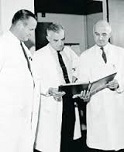
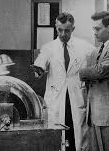
On Dec. 23, 1954 the first successful Kidney Transplant is performed on the identical Herrick twins Richard and Ronald at Peter Bent Brigham Hospital in Boston, Mass. by surgeon Joseph Edward Murray (1919-2012), physician John Hartwell Harrison (1909-84), "Founder of Nephrology" physician John Putnam Merrill (1917-84) et al., winning Murray a share of the 1990 Nobel Med. Prize; by 1973 10K transplants are performed.
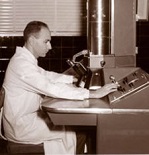
In 1955 Humberto Fernandez Moran (1924-99) of Venezuela invents the diamond knife (diamond-bladed scalpel); in 1971 it is introduced in Britain, along with the first totally sterile hospital units.


In 1955 Am. physician Jonas Edward Salk (1914-95) announces the success of his killed-virus Salk Polio Vaccine, and mass immunization begins; polio claimed 1 out of 5K in the U.S. during the preceding decade. In 1957 the "shotless" live-virus Sabin Oral Polio Vaccine of Polish-born Dr. Albert Bruce Sabin (1906-93) of the U. of Cincinnati, Ohio is introduced by the World Health Org. (WHO) to worldwide testing; it is endorsed by the Am. Medical Assoc. in 1961, and supplants the Salk vaccine by 1966, ending polio epidemics worldwide - say "bin"?
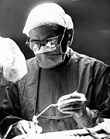
In 1955 neurosurgeon Harold Cornelius Voris (1902-80) et al. of Mercy Hospital and Medical Center in Chicago, Ill. perform the first successful separation operation for Siamese (conjoined) twins.


In 1955 Am. cardiologist Paul Maurice Zoll (1911-99) et al. invent the Artificial Cardiac Pacemaker, the Electrodyne PM-65, containing an electrical pulse generator and electrocardiograph on a portable cart.
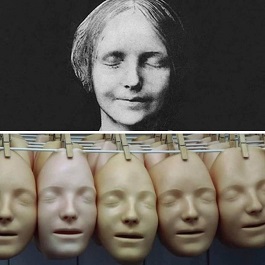
In 1955 the CPR doll is created by toymaker Asmund Laerdal and physicians Peter Safar and James Elam from L'Inconnue de la Seine (Unknown Woman of the Seine), a plaster death mask of an anon. woman who drowned in the Seine River in the 1880s, becoming known as Rescue Anne (Resusci Anne), the most kissed-face on Earth.
In 1956 Amniocentesis is first used for the detection of prenatal genetic disorders by St. Mary's Hospital in England.

In 1961 Cryosurgery is first performed by Am. neurosurgeon Irving Spencer Cooper (1922-85) on Parkinson's disease patients to reduce tremors.
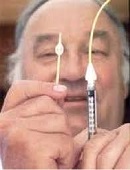
In 1961 after witnessing 50% of patients with blood clots in their limbs die, Cincinnati, Ohio-born surgeon Thomas J. "Tom" Fogarty (1934-) (not to be confused with the Creedence Clearwater Revival Fogarty) invents the Fogarty Balloon Embolectomy Catheter to remove clots in arteries using only local anesthesia via minimally-invasive surgery, patenting it in 1969; in 1965 it is used for the first balloon angioplasty.
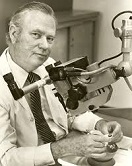
In 1961 Am. physician William Fouts House (1923-2012) invents the Cochlear Implant (bionic ear) for deaf people, which stimulates nerves inside the inner ear with electric currents; it is first marketed commercially in 1972.

In 1961 French-Australian physician Jacques Francis Albert Pierre Miller (1931-) proves that the thymus is part of the immune system by removing it from newborn mice, who fail to develop white blood cells or lymph nodes and accept grafts without rejection.
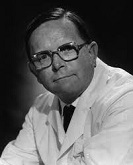
In Nov. 1962 Sir John Charnley (1922-82) of Britain perfects Hip Replacement Surgery, AKA Low Frictional Torque Arthroplasty (LFA), using high molecular weight polytethylene (HMWP), which is more durable than Teflon (polytetrafluorethylene); in 1969 the first hip replacement surgery in the U.S. is performed at the Mayo Clinic.
In 1963 Am. physician Thomas "Tom" Fogarty (not to be confused with the Creedence Clearwater Revival Fogarty) patents the Fogarty Balloon Embolectomy Catheter to remove clots in arteries.

In 1963 Am. opthalmologist Charles D. Kelman (1930-) develops Ultrasonic Phacoemulsification to liquify cataracts with an ultrasonic probe and then suction them out without having to remove the lens, reducing a 10-day hospital stay to an outpatient procedure; in the 1970s he develops artificial lenses.


In 1963 Am. physicians Thomas Earl Starzl (1926-) and Francis Daniels Moore (1913-2001) perform the first Liver Transplant in Denver, Colo.

On Jan. 11, 1964 U.S. surgeon gen. #9 (1961-5) Luther Leonidas Terry (1911-85) issues the Surgeon General's First Report on Smoking and Health, warning that "cigarette smoking is a health hazard of sufficient importance in the United States to warrant appropriate remedial action", linking it with lung cancer and heart disease, causing the percentage of Americans who believe that smoking causes cancer to go from 44% in 1958 to 78% in 1968; too bad, tobacco cos. officially deny the charges and blockade any type of concrete remedies; meanwhile 490M cigarettes are smoked by Americans this year (4,135 for every adult).
In 1964 the laser scalpel is invented.


In 1966 Paul Douglas Parkman (1932-) and Harry Martin Meyer Jr. (1928-2001) of the Nat. Insts. of Health (NIH) in Auburn, N.Y. develop the first effective inexpensive Rubella (German Measles) Vaccine, causing the U.S. rubella epidemic of 1963-5 to be the last (until ?); in the 1970s it becomes a component of the measles-mumps-rubella (MMR) vaccine given to infants at 15 mo.; too bad, other countries are slow to use it, causing frequent epidemics as late as 1998-9 in Greece.


On Nov. 30, 1967 Argentine-born surgeon Rene Geronimo Favaloro (1923-2000) of the U.S. performs the first planned Coronary Artery Bypass Surgery for coronary disease, using a vein from a leg; the first bypass procedure was performed in 1962 by Johns Hopkins U. surgeon David C. Sabiston Jr. (1925-2009) under emergency conditions, and in 1964 Michael E. DeBakey and H. Edward Garnett of Tex. performed another emergency bypass.

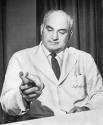
A big year for people with bad hearts? On Dec. 3, 1967 the first successful Human Heart Transplant is performed by Dr. Christiaan Neethling Barnard (1922-2001) in Cape Town, South Africa on Jewish grocer Louis Washkansky (b. 1913), who lives 18 days (until Dec. 21) with a heart from a 25-y.-o. brain-dead accident victim; on Dec. 7 New York City surgeon Adrian Kantrowitz (1918-2008) performs the first U.S. heart transplant, after which 260 more transplants are tried worldwide over the next seven years, with only 20% surviving more than one year, and some for over six years; meanwhile U.S. prosecutors threaten to arrest surgeons taking organs from brain-dead individuals - maybe you'll feel better after having some dirty sex?

In 1967 John Hopkins U. gynecologist Hugh J. Davis (1927-) invents the round bug with one large eye and legs on each side Dalkon Shield intrauterine device (IUD), selling the rights on June 12, 1970 to A.H. Robins Inc. (founded 1860) (who acquired Chap-Stick in 1963), who begin marketing it in Jan. 1971, selling 4M-5M by the time they withdraw it in June 1974 under FDA pressure, its tendency to "wick" causing pelvic inflammatory disease (PID) along with an outbreak of miscarriages, birth defects, and maternal deaths, leading to numerous lawsuits and millions of dollars in damage awards, bankrupting Robins, who sell out to Am. Home Products Corp. in 1989, the bad publicity killing copper IUDs also, although they were never proved dangerous; actually it was only the large size version of the Dalkon Shield for women who had given birth that had problems, and if the shark lawyers hadn't gone for the green, it coulda survived? - don't mess with Mother Nature jokes here?
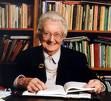
In 1967 English Anglican nurse Cicely Mary Saunders (1918-2005) founds St. Christopher's Hospice in Sydenham, London, becoming the first modern hospice for the terminally-ill; she you know whats there herself in 2005.
On Jan. 2, 1968 Dr. Christiaan N. Barnard performs his 2nd heart transplant on retired South African dentist Philip Blaiberg (1909-69), who lasts 563 days (19 mo. 15 days) because of improved anti-rejection drugs; by the end of the cent. 100K heart transplants are performed, with 85-90% of patients surviving one year, and 75% for five years.
On Apr. 23, 1968 surgeons at the Hopital de la Pitie in Salpetriere, Paris perform Europe's first heart transplant on Clovis Roblain (b. 1902).

On May 2, 1968 Houston, Tex.-born cardiovascular surgeon Denton Arthur Cooley (1920-2016) performs the first successful heart transplant in the U.S., from a 15-y.-o. female to a 47-y.-o. male; he performs four more transplants within 1 mo.; meanwhile his boss Michael E. DeBakey gets pissed-off for allegedly doing it without his authorization, causing them to get into a feud for decades (until 2007).
In 1968 doctors at the U. of Minn. perform the first successful bone marrow transplant to cure disease (other than radiation sickness) in a human being on a 4-mo.-o. boy suffering from an immune disorder, using marrow from his sister.


In 1968 English surgeon Sir Roy Yorke Calne (1930-) performs the first liver transplant in Europe, going on to perform the first liver, heart and lung transplatn in 1987. Dentists show that dental caries (tooth decay) is caused by an acid produced by streptococcal bacteria that normally live in the mouth and metabolize sugar. British researchers report in Apr. that oral contraceptives can cause blood clots in susceptible women.
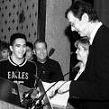
In 1968 Chicago, Ill.-born 6'7" physician John Michael Crichton (1942-2008) (star basketball player for Roslyn H.S. in Chicago in 1960) pub. his first novel A Case of Need under the alias Jeffrey Hudson. In 1969 he pub. The Andromeda Strain, the first novel under his own name; Dr. Jeremy Stone fights a deadly microorganism from outer space; good sales help him pay for Harvard Medical School; "This book recounts the five-day history of a major American scientific crisis" (opening line). In 1972 he pub. The Terminal Man. In 1980 he pub. Congo, about cerebral gorillas in the Lost City of Zinj; filmed in 1995. In 1990 he pub. Jurassic Park, a bestseller about an amusement park filled with reconstituted dinosaurs; filmed in 1993; in 1995 he pub. the sequel The Lost World. In 1992 he pub. Rising Sun; why Americans distrust the Japanese. In 1999 he pub. Historyscope; great title?; a silly time travel plot, but a cool recreation of the 14th cent. C.E.; "Professor Johnston often said that if you didn't know history, you didn't know anything. You were a leaf that didn't know it was part of a tree."

In summer 1969 80 survivors of the 1917-26 New York City enceaphalitis epidemic housed in the Beth Abraham Hospital in New York City, all frozen in a trancelike state are awakened by English Jewish neurologist Oliver Wolf Sacks (1933-2015) using L-dopa, starting with patient Leonard Lowe, only to find that the effects fade or disappear, incl. the smile and the playful quality. In 1973 he pub. Awakenings; filmed in 1990 starring Robin Williams and Robert De Niro.

In 1969 British physiologist Robert Geoffrey Edwards (1925-) and British OBGYN Patrick Christopher Steptoe (1913-88) perform the first successful IVF (In Vitro Fertilization) of a human ovum; the first "test-tube baby" resulting from this technique is born in England in 1978 - the original Steptoe and Son?

In Dec. 1971 Swiss pharmacologist Hartmann F. Stahelin (Stähelin) (1925-2011) of Sandoz Corp. in Basel, Switzerland discovers the immunosuppresant Cyclosporin (Ciclosporin) A in the fungus Tolypociadum inflatum; on Jan. 31, 1972 Belgian scientist Jean-Francois Borel (1933-) discovers ts immunosuppresant activity; in 1978 Anthony C. "Tony" Allison (1925-2014) and Sir Roy Yorke Calne (1930-) of Cambridge U. prove its success in preventing organ rejection in kidney transplants; in 1983 it is approved by the FDA.

In 1971 French rheumatologists Jacques Forestier (1890-1978) and R. Lagier become the first to diagnose Ankylosing Hyperostosis of the spine, AKA Diffuse Ideopathic Skeletal Hyperostosis (DISH), where the vertebrae fuse together and look like a dish of wax has been poured over them.
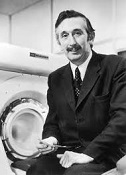
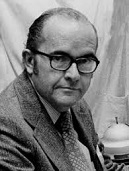
In 1971 English electrical engineer Sir Godfrey Newbold Hounsfield (1919-2004) uses medical X-rays to reconstruct a 3-D image, improving on the CAT scan method previously discovered by Allan MacLeod Cormack (1924-98) and William Henry Oldendorf (1925-92) to create X-Ray Computed Tomography (CT Scan).
Christmas 1971 becomes a good time for medical funding? On Dec. 20, 1971 10 French physicians create a team that later becomes known as Doctors Without Borders (Médecins Sans Frontières) to help needy people in the Nigerian region of Biafra, growing to 2K volunteers in 18 countries by 2000, and 30K in 70 countries by 2015.
In 1971 U.S. researchers discover that electric currents can speed the healing of fractures.
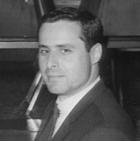
On Mar. 3, 1972 after white Prague, Czech.-born U.S. Public Health Service employee Peter Buxtun (Buxton) (1937-) blows the whistle to the AP, causing the Washington Star to air the story last July 25 and the program to be terminated, U.S. HEW secy. Caspar Weinberger finally authorizes treatment for the survivors of the infamous Tuskegee Syphilis Experiment, 399 black men who in 1932-72 were left untreated for syphilis so that doctors could study the progress of the disease; 28 of them die from the disease before the U.S. govt. later pays $10M to the victims, and Pres. Clinton apologizes to the final eight on May 16, 1997 - just wash your hands after shaking?

In 1972 New York City-born Harvard Medical School-educated surgeon Robert Brian "Robin" Cook (1940-) pub. his first novel The Year of the Intern, inventing the medical thriller, combining fact and fantasy, giving readers a glimpse inside the weird world of medicine plus a lesson on freakiness. In 1977 he pub. Coma, a bestseller about four medical students who discover that the senior doctors are putting patients in a coma then harvesting their body parts for the black market. In 1979 he pub. Sphinx, trying to go out of the medical thriller biz and learning it ain't worth it? In 1980 he pub. Brain. In 1982 he pub. Fever; a cancer researcher's daughter gets leukemia, which he traces to a chemical plant. In 1983 he pub. Godplayer; psychiatrist Cassandra Kinsley marries the egotistical top heart surgeon at the hospital. In 1985 he pub. Mindbend; Adam Schonberg goes to work for a mad drug co. In 1987 he pub. Outbreak; Dr. Melissa Blumenthal of the CDC in Atlanta discovers doctors planting viruses in health care center, and they come after her. In 1988 he pub. Mortal Fear; Dr. Alvin Hayes and his stripper babe Carol Donner track the mystery of deaths by aging. In 1989 he pub. Mutation; Dr. Victor Frank tries to create a genius son by implanting embryos, and creates a Frankenstein. In 1990 he pub. Harmful Intent; anesthesiologist Jeffrey Rhodes is framed for malpractice. In 1991 he pub. Vital Signs. In 1992 he pub. Blindsight. In 1993 he pub. Fatal Cure; Vt. doctors David and Angela Wilson take on a corrupt HMO; also Terminal; the Forbes Cancer Centre creates a cancer, then cures people who get it. In 1995 he pub. Contagion; forensic pathologist Jack Stapleton takes on corrupt HMO Americare. In 1996 he pub. Acceptable Risk; a scientist discovers a mind-altering drug and experiments on himself. In 1997 he pub. Chromosome 6; Dr. Jack Stapleton traces a Mafia corpse to Africa. In 1998 he pub. Toxin; cardiac surgeon Kim Reggis loses his daughter Becky to E. coli and infiltrates a meat-packing plant. In 1999 he pub. Vector; disgruntled Russian immigrant Yuri Davydov plots to do the U.S. in with Soviet bioweapons.


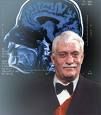
In 1972 MRI (Magnetic Resonance Imaging), based on energy absorption by nuclei is pioneered by Am. chemist Paul Christian Lauterbur (1929-2007) in his farmhouse basement in Sidney, Ohio by making fuzzy 2-D images of water in small glass tubes, getting rejected by Nature as trivial, then refined by English physicist Sir Peter Mansfield (1933-), for which they are awarded the 2003 Nobel Physics Prize; they are introduced in Britain in 1982, and the FDA approves them for the U.S. in 1984; they cost 50% more than CAT-scanners, but are superior in permitting blood flow to be viewed; Armenian-Am. Harvard medical grad student Raymond Vahan Damadian (1936-) of the U.S. started it all, coming up with the idea in 1969 and applying for the first patent in 1971, and receiving it in 1973, then performing the first full body scan July 2, 1977, although without a mechanism for generating images - is there a doctor in the house?
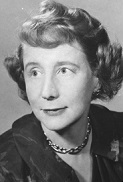
In Mar. 1974 Yale Nursing School dean (since 1959) ("Mother of the American Hospice Movement") Florence Wald (Florence Sophie Schorske) (1917-2008) et al. found Conn. Hospice, the first hospice program in the U.S.

In 1974 Italian father-son gynecologists Arpad Fischer and Giorgio Fischer invent the cannula blunt tunneling method for Liposuction; in 1982 French surgeon Yves-Gerard Illouz (1929-2015) develops the Illouz Method using high-vacuum suction; in 1985 Tumescent Liposuction is developed by Drs. Klein and Lillis, using local anesthesia in an office setting, followed in 1986 by Super Wet Liposuction; in 1999 Ultrasound Assisted Liposuction (UAL) is invented.

In 1974 Russian opthalmologist Svyatoslav Nikolayevich Fyodorov (1927-2000) of Russia perfects Radial Keratotomy for vision correction; it is introduced to the U.S. in 1978.
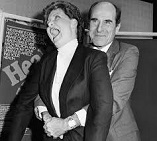

In 1974 Am. thoracic surgeon Henry Judah Heimlich (1920-2016), 2nd cousin of "Potsie in Happy Days" actor Anson Williams (1949-) invents the Heimlich Maneuver (under-the-diaphragm abdominal thrusts) for choking victims.
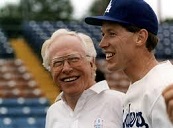

In 1974 Los Angeles Dodgers team surgeon Frank James Jobe (1926-2014) performs the first Tommy John Surgery (ulnar collateral ligament reconstruction) (UCL) on ML pitcher Thomas Edward "Tommy" John Jr. (1943-), replacing the ligament in his left (pitching) arm with a tendon from his right forearm, after which John goes on to win 164 more games, becoming the oldest player in the ML in 1989-9, retiring in 1989 when Mark McGwire, a patient of his dentist father gets two hits from him, with the soundbyte "When your dentist's kid starts hitting you, it's time to retire."

In May 1977 the first Balloon Angioplasty is performed in St. Mary's Hospital, San Francisco, Calif. interoperatively during bypass surgery, followed on Sept. 16 by Swiss surgeon Andreas Roland Gruentzig (1939-85) on an awake 37-y.-o. insurance salesman in Zurich; by 1995 400K patients in the U.S. receive the procedure each year.



On July 25, 1978 5 lb. 12 oz. Louise Joy Brown (1978-), the first test tube baby via In-Vitro Fertilization (IVF) (ovule insemination in a Petri dish followed by reimplanation) is born in Oldham, England, causing a firestorm of controversy even though her mother Lesley Brown (1947-) was fertilized with sperm from her hubby; she was actually grown in a football-size jar; British gynecologist Patrick Christopher Steptoe (1913-88) and British physiologist Robert Geoffrey "Bob" Edwards (1925-) do the work, winning Edwards the 2010 Nobel Med. Prize.
On May 8, 1980 the World Health Org. (WHO) announces that viral smallpox (variola major) has been eradicated after causing 300M-500M deaths since 1914 by a massive internat. vaccination program; the last known case occurred on Oct. 26, 1977 in Merca District, Somalia; an effective treatment has never been developed?
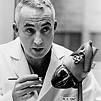
In 1981 Am. surgeons Norman Edward Shumway (1923-2006) and Bruce A. Reitz (1944-) of Stanford U. perform the first Heart-Lung Transplant.


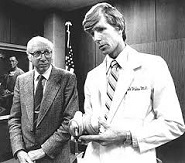

On Dec. 2, 1982 the aluminum-plastic Jarvik-7, the first artificial human heart, designed by Mich.-born engineer Robert Koffler Jarvik (1946-) and Dutch-born dialysis pioneer ("Father of Artificial Organs") Willem Johan "Pim" Kolff (1911-2009) is transplanted into retired dentist Dr. Barney Clark (1921-83) (inventor of kidney dialysis) by a good hands team of surgeons led by William Castle DeVries (1943-) from Cape Town, South Africa at the U. of Utah Medical Center in Salt Lake City; he lives 112 days with the device (until Mar. 23, 1983), which requires him to remain connected to a compressed-air machine.


In 1982 Western Australian physician Barry James Marshall (1951-) and pathologist John Robin Warren (1937-) of Royal Perth Hospital propose that the "unidentified curved bacillus" Helicobacter pylori is the cause of peptic ulcer and gastric cancer, not spicy foods or emotional distress, fighting skepticism for years until proving it, then winning the 2005 Nobel Med. Prize; 80% of ulcer patients are permanently cured with antibiotics.
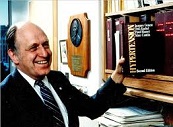
In June 1983 Canadian physicians Jacques Genest (1919-2018), Marc Cantin (1933-90) et al. of McGill U. identify the hormone produced by the heart that regulates blood pressure; in Aug. it is synthesized by a team led by Ruth F. Nutt of Merck Inst.
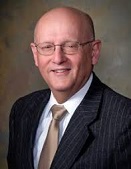
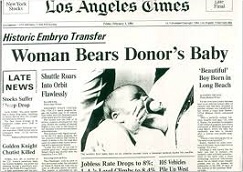
In July 1983 Am. physicianJohn Edmond Buster (1941-) et al. of UCLA perform the first successful Human Embryo Transfer from one woman fertilized by artificial insemination to another (wife of the donor) resulting in a live birth next Feb. 3.
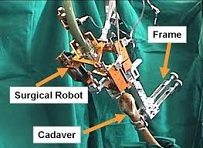
In 1983 Arthrobot, developed by engineer James McEwen, physician Brian Day (1947-) et al. of the U. of British Columbia becomes the first robot to assist in robot-assisted surgery in Vancouver, Canada.
On Mar. 4, 1984 18-y.-o. Bennington College freshman Libby Zion (b. 1966) dies in the emergency room of New York Hospital after being given 25 mg. of Demerol, after which her father Sidney Zion (writer for the New York Times) sues them for malpractice; in Feb. 1995 he loses, but the experience causes laws to be passed limiting the number of hours doctors can work without rest to 80 hours/week.
On Oct. 26, 1984 a baboon heart is transplanted into 15-day-old Baby Fae at Loma Linda U. Medical Center in Calif., becoming the first xenotransplant; she lives until Nov. 15.
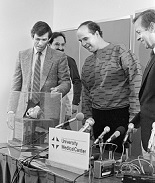
On Sept. 8, 1985 Michael Drummond (1960-90) undergoes an operation at the U. of Ariz. Medical Center in Tucson to replace his artificial heart with a real one from a donor in Tyler, Tex., becoming the first patient successfully given an artificial heart to buy time until he can receive a human one.

In 1985 Erich Muhe (Mühe) (1938-) of Germany performs the first Laparoscopic Cholecystectomy, removing a patient's gall bladder sans major incisions.

In 1985 ex-Golden Gloves boxer Michael Edward Phelps (1939-) of the U.S. invents Positron Emission Tomography (PET), which produces a 3-D image of a body via gamma rays emitted by a positron-emitting radionuclide tracer; James Van House and Arthur Rich are the first to pub. an image from a PET microscope.
In 1985 New York City opthalmologist Dr. Steven Trokel of Columbia U. performs the first laser eye surgery with an excimer "cool" laser, founding Photorefractive Keratectomy (PRK).
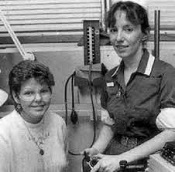
On Dec. 17, 1986 Davina Thompson (1947-98) becomes the world's first triple transplant patient when she receives a new heart, lungs, and liver at Papworth Hospital in Cambridge, England.

The Original House, M.D.? On May 11, 1987 in a medical first, doctors in Baltimore transplant the heart and lungs of an auto accident victim to Clinton House, who gave up his own heart to a 2nd recipient; House, the nation's first living "heart swapper" dies 14 months later. In 1987 English surgeon Sir Roy Yorke Calne (1930-) performs the first liver, heart, and lung transplant, followed by the first intestinal transplant in the U.K. in 1992, and the first combined stomach, intestine, pancreas, liver, and kidney cluster transplant in 1994 - excuse me for not shaking hands?

On Sept. 6, 1987 doctors at Johns Hopkins Hospital in Baltimore, Md. led by Benjamin Solomon "Ben" Carson (1951-) succeed in separating 7-mo.-old conjoined twins Benjamin Binder (1987-) and Patrick Binder (1987-) from Ulm, West Germany (who were joined at the head) after 22 hours of surgery.

In Sept. 1990 Tulsa, Okla.-born physician William French Anderson (1936-) successfully injects healthy genes into 4-.y.-o. Ashanti DeSilva, who suffers from Bubble Boy Disease (severe immunodeficiency), becoming the father of the field of Gene Therapy (Human Gene Transfer); too bad, on July 19, 2006 he is convicted of repeatedly molesting a colleague's 10-y.-o. daughter who took martial arts classes at his home, and sentenced to 14 years in prison, then released on May 17, 2018 - blue jean therapy?
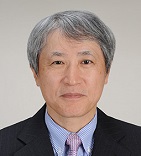
In 1991 Japanese cardiac surgeon Amano Atsushi (1955-) pioneers Off-Pump Coronary Artery Bypass Surgery; on Feb. 18, 2012 he performs a successful operation on Emperor Akihito.
On Nov. 5, 1998 James A. Thomson of the U. of Wisc. announces the isolation of the first embryonic human stem cells; five days later a team led by John D. Gearhart at Johns Hopkins U. follows suit; they are believed to have potential for treating incurable diseases such as Parkinson's; in July R.G. Young, D.L. Butler et al. pub. an article in Journal of Orthopedic Research, announcing the use of stem cells for Achilles tendon repair.
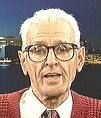
On Mar. 26, 1999 after 130 assisted suicides (voluntary euthanasia) and four acquittals since Janet Adkins in 1990, "Dr. Death" pathologist Jacob "Jack" Kevorkian (1928-2011) is charged with 2nd-degree murder in Mich. for assisting the suicide of Lou Gehrig's disease patient Thomas Youk, representing himself and getting convicted, receiving a 10-25 year prison sentence, threatening to starve himself to death if they don't relieve, er, release him, which they don't buy; he is not released on parole until June 1, 2007 after first vowing to give it up.

On Jan. 31, 2000 British physician (gen. practitioner) Dr. Harold Frederick Shipman (1946-2004) AKA "Doctor Death", "the Angel of Death" is convicted of 15 counts of murder and given a "whole life tariff", becoming the first British physician convicted of murdering his patents; he is suspected of killing as many as 297 people, all patients, in 1995-8; on Jan. 13, 2004 he hang himself in his cell in HM Prison Wakefield in West Yorkshire; on Jan. 27, 2005 the £21M Shipman Inquiry Report is pub., concluding that he probably murdered 250+, 80% of them women, usually by injecting diamorphine into them then falsifying their medical records.


On June 26, 2000 (Mon.) at the White House Francis Sellers Collins (1950-), dir. of the Human Genome Project, and John Craig Venter (1946-), pres. of Celera Genomics Corp. announce their separate First Drafts of the Human Genome, the epoch-making first sequencing (deciphering) of 95%-97% of the human genome, expected to revolutionize medicine, just in time for the 50th anniv. of the pub. of the double helix work by James D. Watson and Francis Crick, taking only 13 of 15 expected years, declaring that the human genome has 3.1B "letters" (chemical bases); Pres. Clinton calls it "the most wondrous map ever produced", comparing the HGP to the Manhattan and Apollo projects; the program has come in underbudget, and involved 1.6K scientists, and adding the religious soundbyte "Today, we are learning the language in which God created life. We are gaining ever more awe for the complexity, the beauty and the wonder of God's most divine and sacred gift" after being put up to it be Collins, a theist; Collins and Venter continue their war to be the first to finish the sequencing; by the end of the decade a genome can be sequenced in a week; meanwhile insurance cos. and govt. agencies line up to find ways to get and use genetic makeups, while every Tom, Dick and Harry with a computer rushes to patent genes after roping them off like in the Okla. Land Rush?
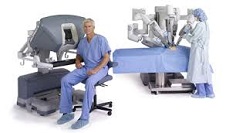
In 2000 the first FDA-approved robot surgery, the removal of a gallbladder is performed in Richmond, Va. using the $1M da Vinci Surgical System by Intuitive Surgical; by 2012 3.1K units worldwide conduct 200K surgeries/year.
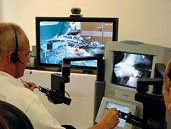
On July 2, 2001 AbioCor, the first self-contained artificial heart is implanted in 59-y.-o. Robert L. Tools (1942-2001) in Louisville, Ky.; he dies on Nov. 30 after 151 days. On Sept. 7 the first remote surgery (telesurgery) is completed by French surgeon Jacques Marescaux (1948-) in New York City, who performs a cholecystectomy on a 68-y.-o. female patient in Strasbourg, France over redundant fiberoptic lines provided by France Telecom, using a $975K ZEUS Robotic Surgical System by Computer Motion.
On Oct. 11, 2003 18 doctors at Children's Medical Center in Dallas, Tex. begin a successful 34-hour separation surgery for 2-y.-o. conjoined twins from Egypt, and finish on Oct. 12.

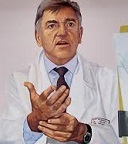
Fillet of face, the new pet chow? On Nov. 27-28, 2005 38-y.-o. unemployed divorced French mother Isabelle Dinoire (1967-2016), who had the lower half of her face ripped off in June by her Labrador retriever mix while unconscious with drugs becomes the first recipient of a partial face transplant by an internat. team in Amiens led by Dr. Jean-Michel Dubernard (1941-), who operate for 15 hours; the donor was a brain-dead woman in Lille; the announcement on Dec. 2 draws internat. criticism that she won't be able to handle the new face psychologically; on Oct. 25, 2006 an ethics panel in London approves full-face transplants; in the U.S. in 2007 the Cleveland Clinic in Ohio and the Brigham and Women's Hospital in Boston, Mass. become the first to offer it - hold the ugly jokes?

On Nov. 8, 2006 bird flu expert Dr. Margaret Chan Fung Fu-chun (1947-) of Hong Kong becomes the first Chinese to lead the World Health Org. (WHO) of the U.N. as dir. #7, taking office next Jan. 4 (until July 1, 2017); she was Hong Kong's health dir. in 1997 when the city reported the first-ever outbreak of H5N1 bird flu virus, and wins kudos for ordering all 1.5M poultry in the area slaughtered in 3 days - I can enjoy food again?
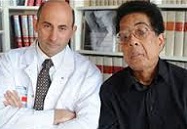
In Mar. 2008 French surgeon Laurent Lantieri of Henri-Mondor Hospital in Creteil performs the first full face transplant on neurofibromatosis sufferer Pascal Coler.
On May 4, 2009 Jeff Kepner (1951-) of Augusta, Ga. undergoes the first-ever double hand transplant, asking for them to be removed in 2016 after the prove nonfunctional; on May 5 Connie Big Gulp, er, Connie Culp (1962-) (whose lowdown hubby shot off her face with a shotgun, then botches his own suicide and gets a lousy seven years for attempted murder) bravely steps forward in Cleveland, Ohio to show the results of the first U.S. face transplant (last year), by the Cleveland Clinic, uttering the soundbyte "I got me my nose" - transplant his face to his ass and vice-versa, what an ass?
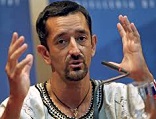
On May 17, 2011 the "Berlin patient" Timothy Ray Brown (1966-) of San Francisco, Calif. becomes the first known AIDS patient to be cured after a stem cell bone marrow transplant.
On July 7, 2011 Paolo Macchiarini et al. at the Karlinska U. Hospital in Sweden perform the first synthetic windpipe transplant.
In July 2011 a team led by surgeon Pedro Cavadas (1965-) at Hospital La Fe in Spain perform the first double leg transplant on a 20-y.-o. male amputee, who in June 2013 has his legs amputated after an unrelated illness forced him to stop taking anti-rejection drugs.
On Dec. 18, 2012 a team of doctors at Johns Hopkins U. perform the first successful double arm transplant on veteran Sgt. Brendan Marrocco (1986-).
On Dec. 27, 2012 scientists in Leeds, England perform the first human hand transplant.
In 2012 the first successful mother-to-daughter womb transplant is performed at Sahlgrenska U. Hospital at Gothenburg U. in Sweden by Mats Brannstrom et al.
On Feb. 25, 2013 the New England Journal of Medicine pub. a study that finds that 30% of heart attacks, strokes, and deaths from heart disease can be prevented by the Mediterranean diet consisting of olive oil, nuts, beans, fish, fruits, vegetables, and wine drunk with meals. On Mar. 3 Deborah Persaud of Johns Hopkins U. announces the first documented case of a child being cured of HIV using antiretrovirals. On Mar. 6 a report by researchers at Yale Medical School identifies table salt as a trigger for autoimmune diseases. On Mar. 15 a British team of doctors announce that they have kept a human liver alive outside the body for the first time ever. On Apr. 10 Tor Wager et al. pub. a paper in the New England Journal of Medicine claiming that they can pinpoint what pain looks like in the brain using fMRI brain scans. On Apr. 11 neuroscientists at Karolinska Inst. in Sweden pub. a paper claiming that they can create the sensation of a phantom hand in a non-amputated patient. On Apr. 15 physicians at Va. Commonwealth U. Medical Center become the first to successfully implant a telescope in a patient's eye to treat macular degeneration. On June 5 doctors at Duke U. Hospital implant the first bioengineered blood vessel into a kidney patient's arm. On Sept. 26 Shehan Hettiaratchy of Imperial College in Fuzhou, China announces the world's first replacement nose grown on a patient's forehead. On Nov. 8 a team at the U. of Ala. performs the first virtual surgery using Google Glass, which they call Virtual Interactive Presence in Augmented Reality (VIPAAR).
On Dec. 11, 2014 doctors at Tygerberg Hospital in Cape Town, South Africa perform the world's first successful penis transplant on a 20-.y.-o. man from Cape Town who had his penis amputated three years earlier in a botched circumcision ceremony; after he begins intercourse five weeks after the procedure, next June 13 Andrew van der Merwe of the U. of Stellenbosch announces that he has conceived his first baby with a partner.
On Feb. 24, 2015 Oskar Aszmann et al. of the Medical U. of Vienna in Austria announce the first bionic reconstruction, replacing injured hands with bionic ones after undergoing voluntary amputation and transplantation of nerves and muscles.
On May 22, 2015 doctors at MD Anderson Cancer Center and Houston Methodist Hospital in Tex. perform the first skull and scalp transplant on 55-y.-o. software programmer Jim Boyson from Austin, Tex.
On Feb. 24, 2016 surgeons Andreas Tzakis et al. at the Cleveland Clinic in Ohio perform the first uterus transplant in the U.S. on 26-y.-o. Lindsey.
On Mar. 30, 2016 Johns Hopkins Medicine performs the first HIV-to-HIV liver transplant.
On May 3, 2016 researchers at Johns Hopkins U. pub. an article in the British Medical Journal that indicates that medical errors mght be the #3 killer in the U.S. after heart disease and cancer, 250K/year.
In early May 2016 the first penis transplant is performed at Mass. Gen. Hospital on 64-y.-o. Thomas Manning.
In Sept. 2016 physicians at Baylor U. Medical Center in Dallas, Tex. perform the first living donor uterus transplants.

In Mar. 2017 Ghana-born Nancy Abu-Bonsrah (1990-) is accepted into the Johns Hopkins U. School of Medicine's neurosurgery residence program, becoming the first black woman.
On Dec. 15, 2017 the first transplanted dead womb birth takes place in Sao Paulo, Brazil.
On July 9, 2019 the Cleveland Clinic of Ohio announces the first successful delivery of a baby from the transplated womb of a dead donor.
On Feb. 25, 2020 physicians Katherine M. Kruckenberg et al. pub. the study Urinary Auto-brewery Syndrome: A Case Report in Annals of Internal Medicine, reporting on a 61-y.-o. woman who brewed beer in her bladder with yeast.